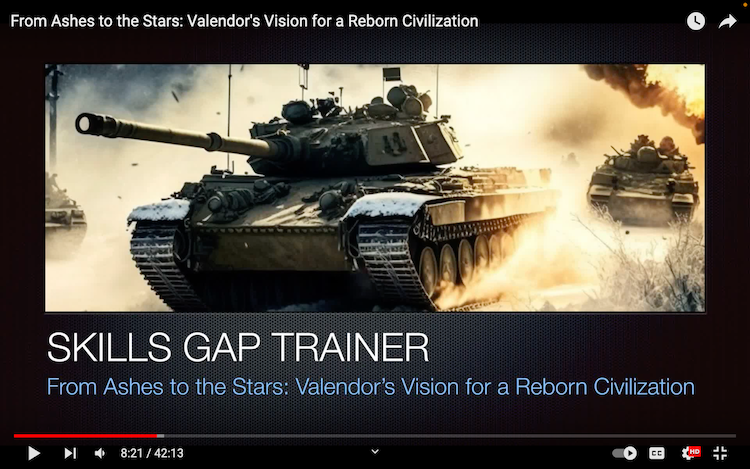Description: A sunny vision experienced by a boy, 6 years old, on a farm near Bucharest, Romania in 1989. A fictional story. 🙂 – Part of the “Creative Skills: Mastering the Digital Craft” Podcast on our YouTube channel.
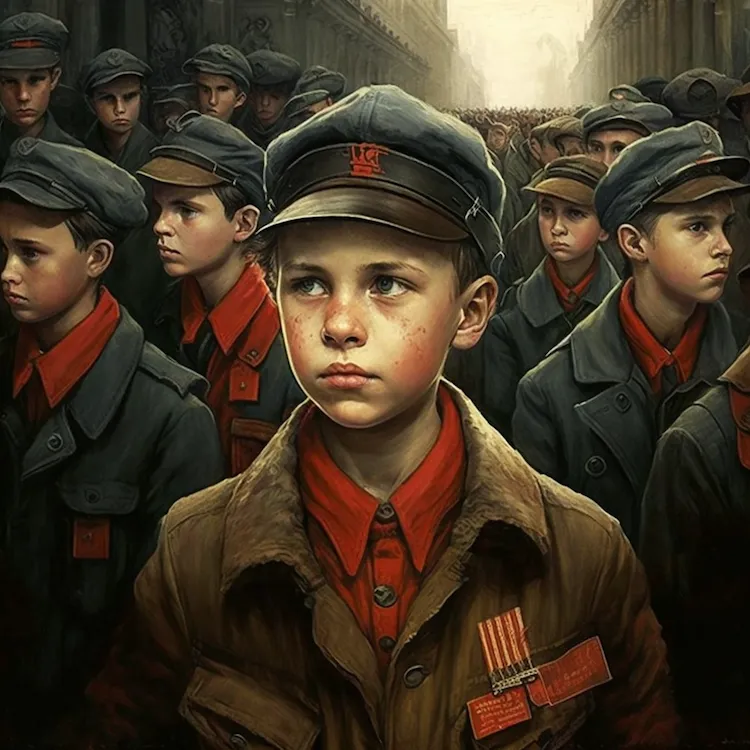
Video: From Ashes to the Stars: Valendor’s Vision for a Reborn Civilization
YouTube Link: https://youtu.be/L7FYx0b4Mf4
Prologue: Raven 9
In a hidden condo buried beneath layers of concrete and secrecy, far removed from the pulsing life of the city, a weary engineer named Valendor sat transfixed before a flickering screen. The code scrolled endlessly, lines upon lines of mathematical prophecy calculating and recalculating the shape of the future.
Valendor worked for a shadowy organization known only to a select few, Sovereign Guardians of Tranquility (SGT), an organization that watched over the balance of power in the world. Their mission was to see beyond the ordinary, to pierce the veil of current events and detect the shifting tides that could change humanity’s course.
The room was hot, filled with the hum of electronic machines that breathed an artificial life into this subterranean world. Valendor’s eyes, bloodshot and tired, never wavered from the screen as the final lines of code settled into place. The simulation was complete.
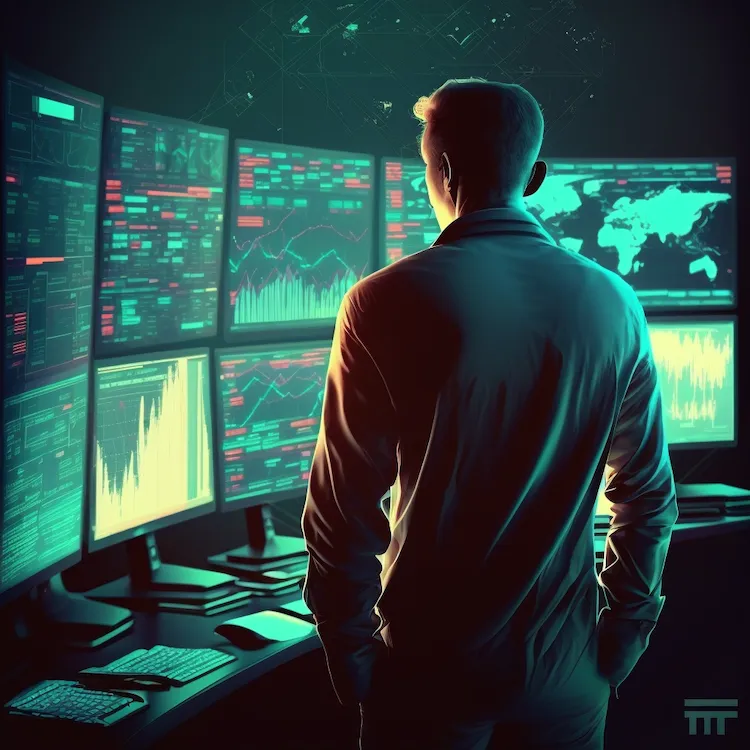
His hand trembled slightly as he reached for the printout, the paper warm and slightly damp as it emerged from the machine. As he read, a chill ran down his spine. The data, the predictions, the future it foretold — all aligned eerily with something he had read long ago, something that haunted the darkest recesses of his mind.
The ancient Book of Revelation, a text filled with symbolism and prophecy, had been a subject of fascination for Valendor during his youth. Its cryptic verses had always seemed to him a puzzle, a code waiting to be deciphered. But never had he imagined that his work, his science, would one day intersect with this theological enigma.
The simulation predicted a series of events, a cascade of dominos that would fall in precise order. It was a path leading to something both magnificent and terrifying. It was a glimpse of a future that seemed preordained, mapped out in sacred texts and now reflected in the cold logic of algorithms and data.
Valendor’s heart pounded as he leaned back in his chair, the weight of realization pressing down on him. Was he now a prophet, a modern-day harbinger bearing witness to the unfolding of the end times? Or was this merely a coincidence, a random alignment of numbers and ancient verses?
He knew in the depth of his soul that this was no mere chance. The world was moving, shifting on a colossal scale, and the echoes of the past were resounding in the present. The Book of Revelation was not just a story; it was a roadmap, a guide to what lay ahead.
With a sense of purpose renewed and a determination he had not felt in years, Valendor set to work. The simulation had spoken, the ancient text had guided, and now it was his task to understand, to prepare, to warn.
In the hidden condo, surrounded by electronic machines that hummed and blinked with an uncaring precision, Valendor, the last engineer of a technological age of reason, began his journey into the revelation of the future.
Chapter 1: Babylon’s Rise
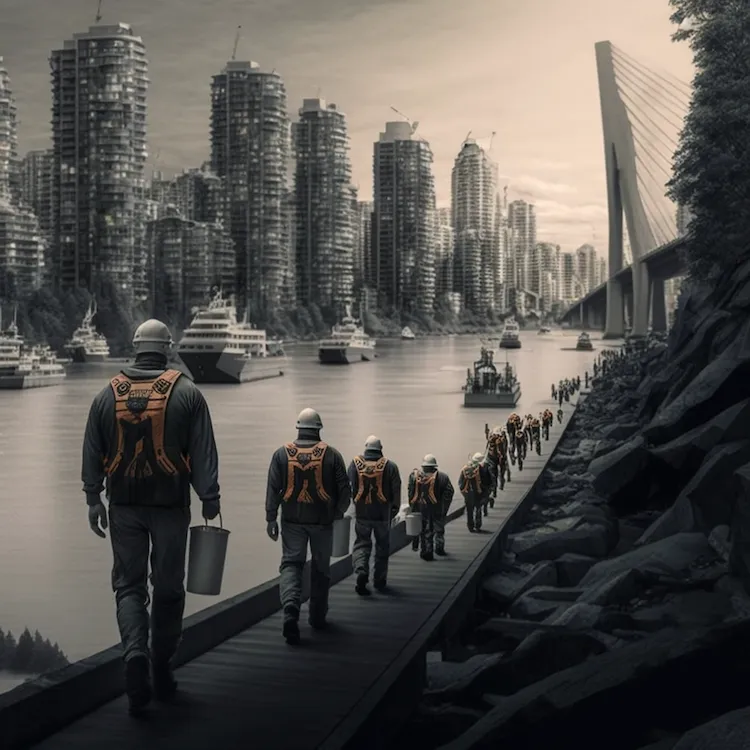
The streets of BC were alive with a fervour not seen in years. The iconic skyline was dotted with cranes and new structures, each building higher than the next, seemingly touching the heavens. The heart of the city, Victoria, pulsed with energy, workers moving cargo with incredible trucking efficiency, their faces a mix of steely determination and heady exhilaration.
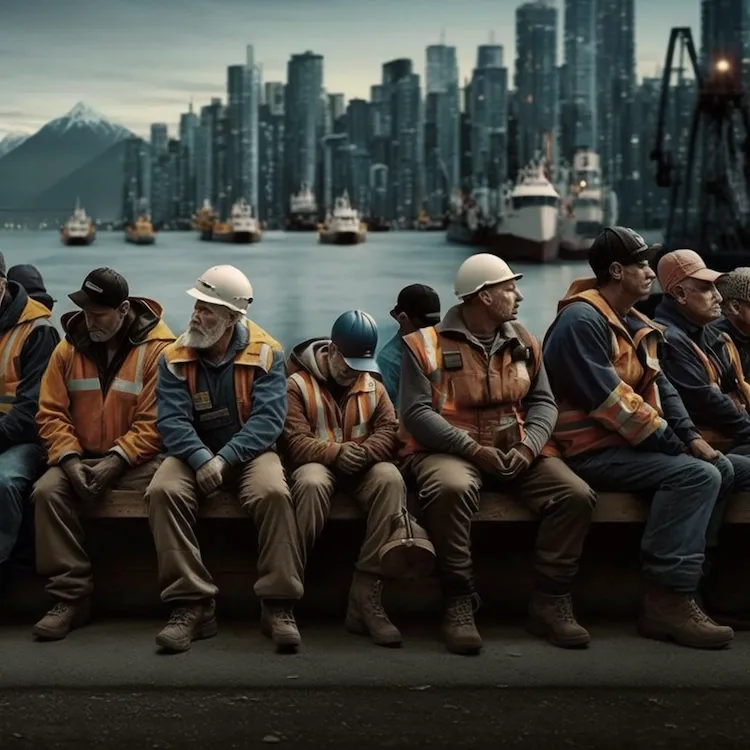
Across the pond, Vancouver’s financial district gleamed with a similar sheen. The surroundings reflected the shimmering skyscrapers of the city, and the endless mountain of imposing 21st century translucent and reflective buildings stood as a testament to Vancouver’s unyielding grip on global finance and business execution. Old institutions, rooted in centuries of tradition, now integrated cutting-edge technology, and Vancouver was more influential than ever.
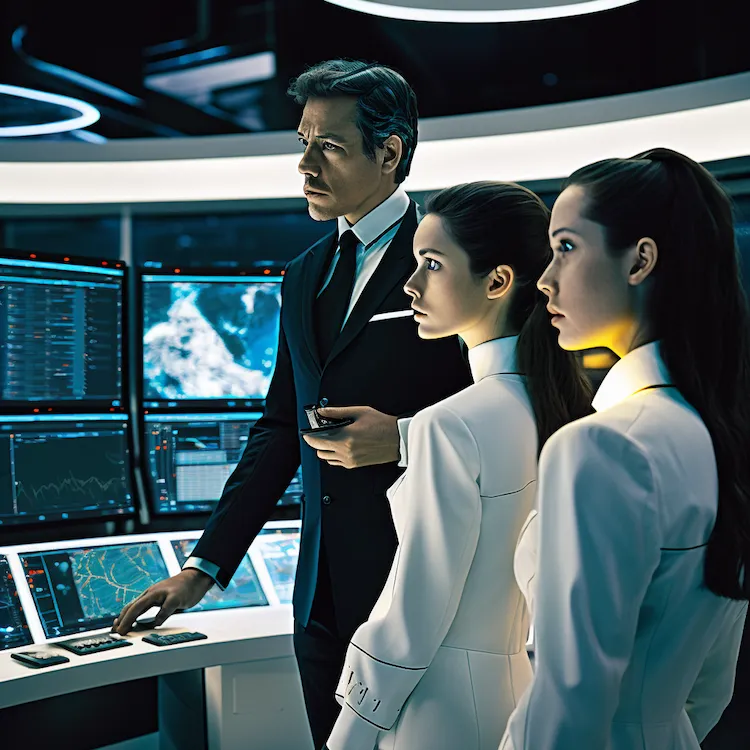
Money flowed like water, and across the water from unknown empires, and Vancouver, just like the rest of Canada, just like the United States, drank deeply. The western nations were buoyed by this tidal wave of prosperity, and for a moment, it seemed like the good times would never end.
Cryptocurrencies, once the domain of tech enthusiasts and the counter-culture, surged into mainstream acceptance. Bitcoin, Ethereum, and a slew of other digital assets became household names. Banks that once sneered at these ‘pretend currencies’ now raced to integrate them. Every day, news outlets reported stories of ordinary individuals becoming overnight millionaires, and the allure of this digital gold rush was irresistible.
Yet, behind this façade of prosperity, discerning technical eyes could see the cracks starting to form.
The unprecedented growth of the western financial centres was, in many ways, built on a house of cards. Cryptocurrencies, while revolutionary, were highly volatile. Their decentralized nature, which many hailed as a feature, was also the Achilles heel to the middleman oriented, traditional, western led, financial system. Regulatory bodies struggled to keep up, and wild speculations led to bubbles that threatened to burst the entire economic system of the world.
Moreover, the very essence of these digital assets – their anonymity and lack of central oversight – became tools for illicit activities or evasion from society, allowing people to live off the grid. Governments, initially slow to respond, began to take note.

In the hallowed halls of financial institutions, murmurs began. Whispers of impending crashes, of bubbles bursting, of debts collapsing, of a reckoning. These were not the unfounded fears of the uninformed. These were the calculated predictions of those who had seen the patterns before, who knew the cyclical nature of boom and bust.
And as the sun set over Vancouver, the world stood at the cusp of change.
Babylon, North America, in all its modern glory, was on the rise. But history had shown that what rises must also, inevitably, fall.
Chapter 2: Awakening the Beasts
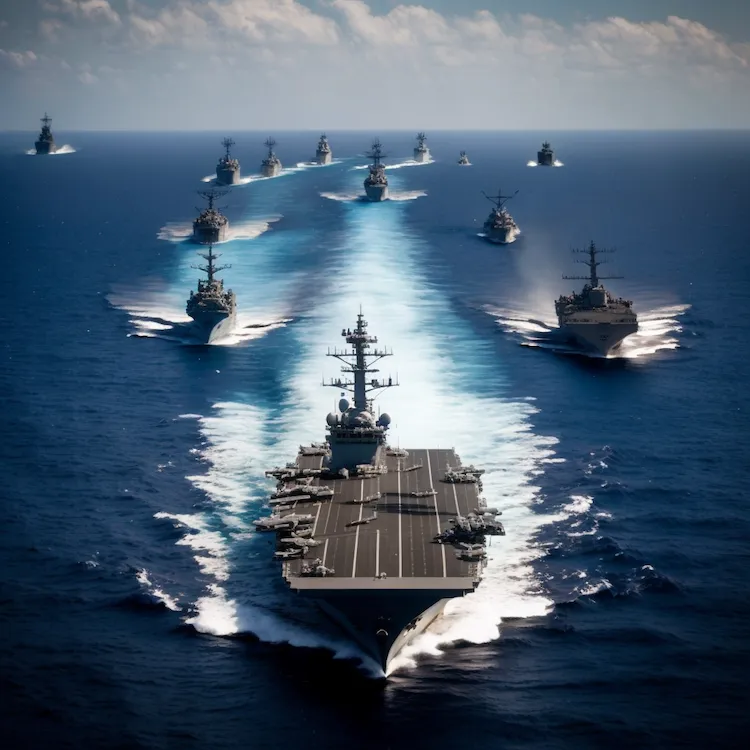
China: The Dragon Unleashed
The South China Sea had become a cauldron of contention, a vast expanse of water where tectonic geopolitical shifts were taking place. China’s naval forces had transformed, almost overnight, from a regional power to a global behemoth. Warships patrolled the waters with assertive confidence, aircraft carriers loomed on the horizon, and the construction of artificial islands had turned coral reefs into military fortresses.
International waters, once the domain of cooperative global governance, now felt the weight of China’s expansionist ambitions. The country claimed these waters as its historical territory, and the message was clear: what was once open was now controlled. The freedom of navigation that had allowed commerce to thrive was being replaced with a New Eastern Order.
Countries bordering the South China Sea, like Vietnam, the Philippines, and Malaysia, found themselves trapped in a delicate dance, attempting to assert their rights while avoiding confrontation with the awakened dragon. The United States, too, found itself irresistibly drawn into these tense waters, conducting “freedom of navigation” operations that were both a show of support for international law and a challenge to China’s growing might.
The dragon had awakened, its eyes fixed on a world that it felt was rightfully its dominion.
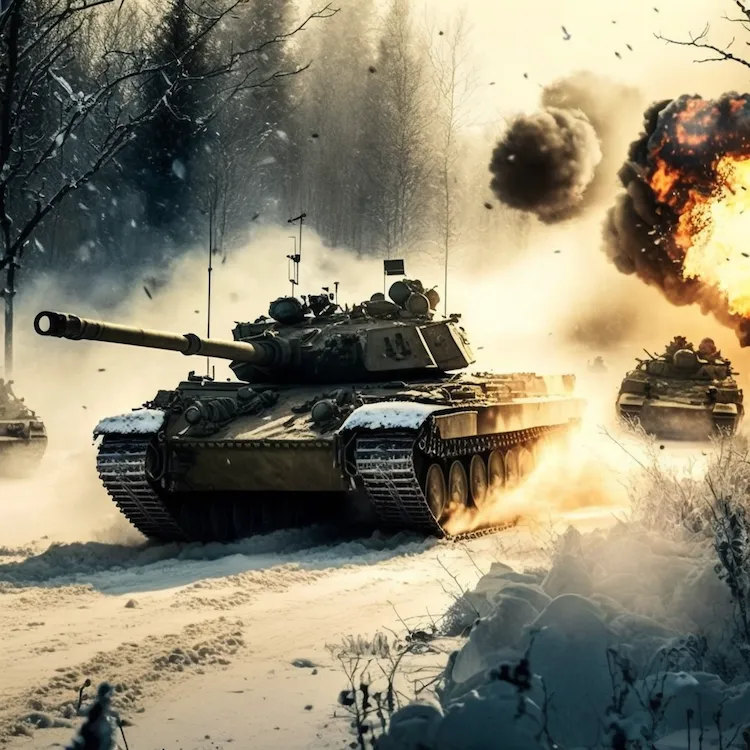
Russia: The Bear Stands Tall
To the west, another beast was stirring.
Russia, a country that had endured the turmoil of transition and hyperinflation, was asserting itself with newfound vigour. The Kremlin’s influence was felt far beyond its borders, and the vast Russian landmass was only the beginning of its reach.
Neighbouring countries like Ukraine, Belarus, and the Baltic states found themselves caught in Russia’s gravitational pull. Traditional values, nationalism, and a strong centralized power were the pillars of Russia’s resurgence, and these principles were being exported with strategic precision.
Where the Western world saw fragmentation and internal division, Russia saw opportunity. The country forged alliances with like-minded governments, supported political movements that aligned with its interests, and used its vast energy resources as both carrot and stick.
The West watched with unease as Russia’s influence grew. The old Cold War rival was not just flexing its military muscles; it was shaping minds and societies, shaping nations, positioning itself as a beacon of traditional values in a world seemingly adrift in relativism.

A New Age Dawns
As China’s naval forces patrolled the South China Sea, and Russia’s shadow spread across its neighbours, the world began to sense a fundamental shift. The beasts were awake, and their roars were not echoes of a bygone era; they were the heralding cries of a new age.
Balance, that delicate equilibrium that had maintained peace and stability, was being replaced by bold ambition and assertive action. The awakened beasts were not content to lurk in the shadows; they were striding onto the world stage, eyes gleaming, ready to reshape the world according to their vision.
What had been predictable was now uncertain. What had been stable was now in flux. The awakening of the beasts was not merely a military or political event; it was a cultural and ideological shift that would have profound and lasting effects on the world.
And as the dragon’s scales glinted in the sun, and the bear’s claws dug into the earth, the world watched with a mixture of awe, fear, and anticipation. The beasts were awake, and they were hungry.
Chapter 3: The Mark’s Beginning
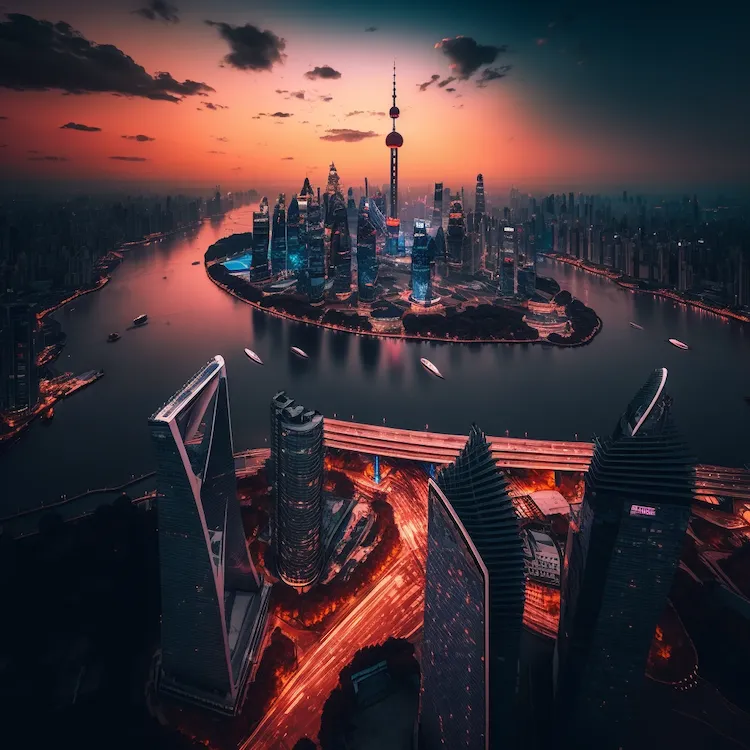
A New Era of Control
In the sprawling metropolis of the world’s great cities, the skyline was undergoing a drastic transformation. The World Enterprise Federation (WEF), a shadowy global conglomerate whispered about in hushed tones, had overseen a project of unprecedented magnitude. Gone were the traditional homes, acreages, and lush farmlands, replaced by towering, ominous concrete condo complexes that loomed like silent guardians.
Communities, which had once thrived by drawing life from the land, were now ushered into these urban prisons, bound in a web of eternal debt dependency spun by the WEF. Promises of modern conveniences and a ‘better’ life pulled the families and children of the world’s farming communities away from their age-old lands, their ownership lost to time. But this new modernity was a gilded cage; freedom and ownership of their earth was the price for convenience.
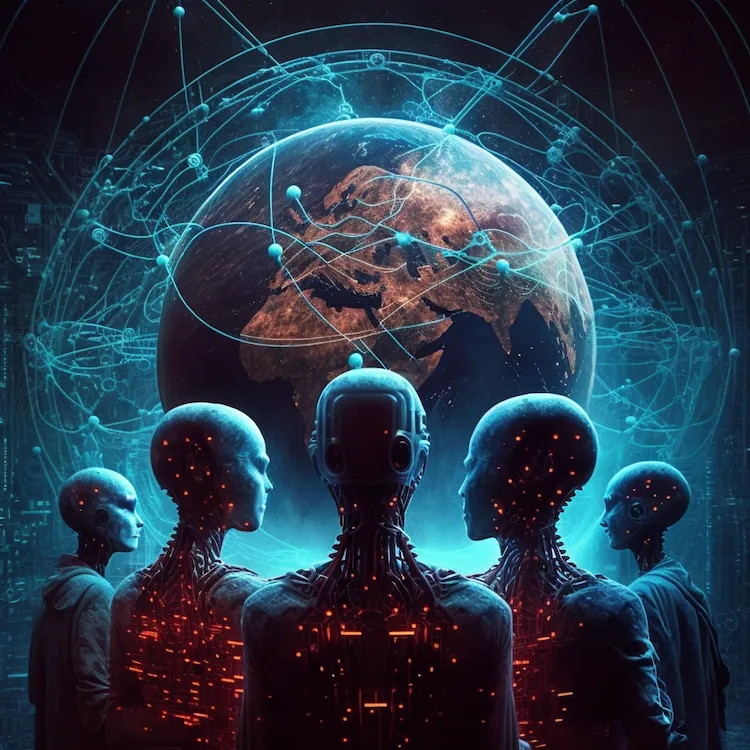
Netlink: The Forehead’s Mark
Netlink was more than mere technology; it was a beacon of a coming age. Positioned near the forehead, it invoked imagery of age-old prophecies speaking of a mark that would rest there. A synthesis of biotechnology, AI, and intricate algorithms, Netlink aimed to redefine human-world interaction, encompassing neural connections and biometric eye scans. But beneath its seductive promise was a snare of surveillance and behavioural guidance.
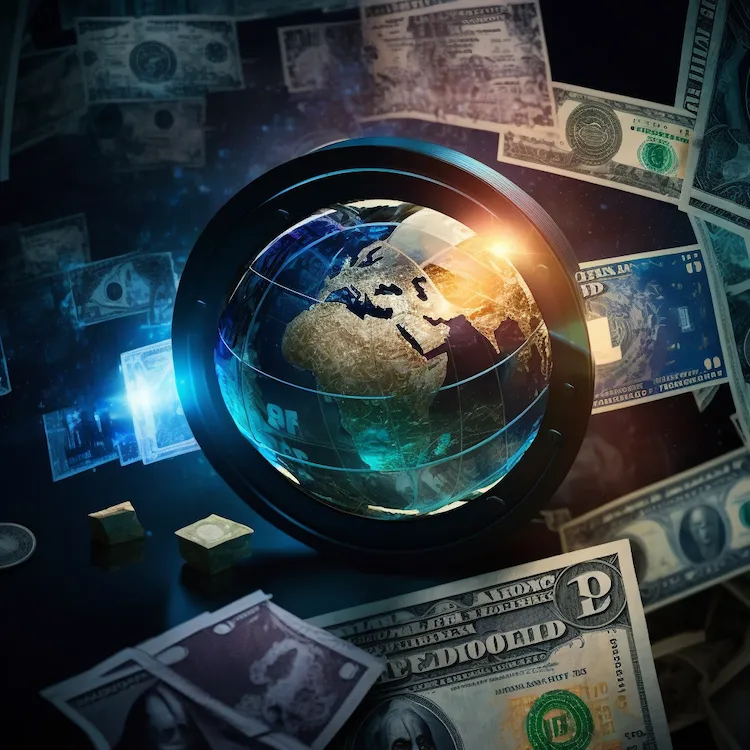
The Rise of CBDC: The Hand’s Mark
In this new world, the hand, an emblem of action and commerce, bore the next mark. The WEF unveiled their masterstroke—The Biometric Central Bank Digital Currency (CBDC). Each transaction, no matter its size, mandated biometric authentication—be it a fingerprint, retinal scan, or even a heartbeat pattern. It seemed foolproof, a solution to fraud and theft. However, it came at a steep cost: total loss of financial privacy. Money, once a symbol of autonomy and power, was now an instrument of oversight, control and dependance. The WEF could trace, track, and dominate every aspect of economic life. Dissent or resistance? One’s assets could be instantly frozen, rendering them impotent, to the will of the leaders.
When combined, Netlink and CBDC birthed the ORB system – Observational Regulatory Biometrics, a silent watchdog and manager of humanity.
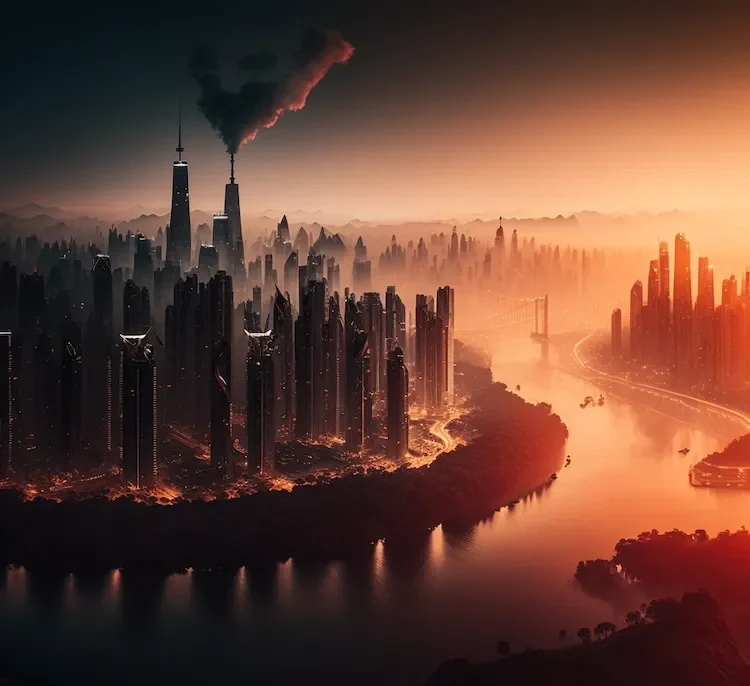
The Urban Integration Initiative
The WEF’s ambition throughout the decades, painted cities as technocratic marvels. These weren’t mere urban landscapes; they functioned as algorithm-fueled organisms. Though they gleamed with the promise of efficiency and sustainability, their underbelly was riddled with eyes—each one watching, recording, controlling.
The urban blueprint wasn’t rooted in resilience or the circle of life. It made its denizens slaves to a delicate balance and a dependency on the supply chain. A trivial glitch could halt water, disrupt food, or plunge entire cities or coast-lines into darkness, showcasing the fragility of this artificial existence.
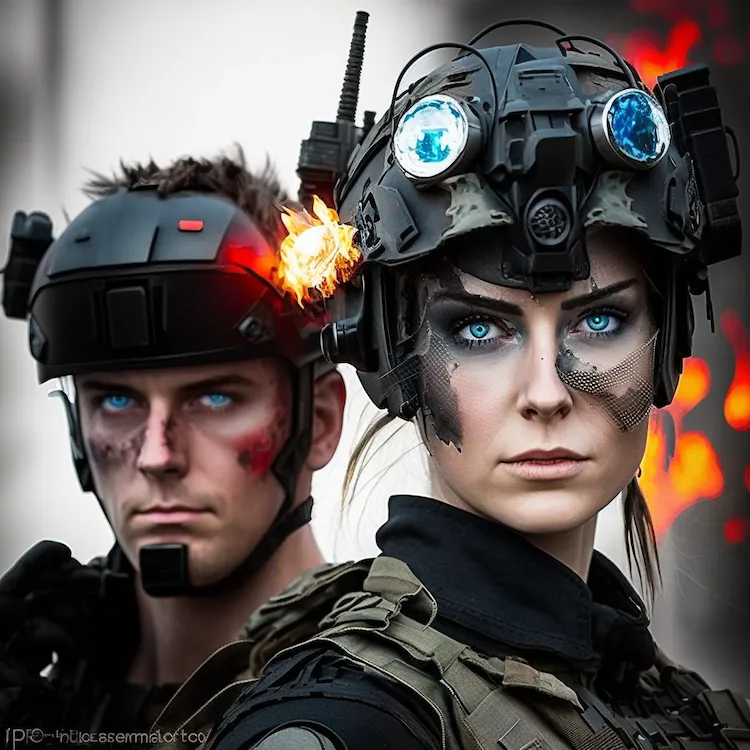
The Awakening of a Prophet
In the shadows of a secluded condo, Valendor’s gaze sharpened. This wasn’t advancement; it was orchestrated submission. With Netlink and the Biometric CBDC as its pillars, the WEF’s intricate web threatened to snap the cords of human tenacity built over eons.
Valendor’s insight pierced the illusion. The Mark wasn’t a physical entity; it was the digital noose tightening around humanity’s very essence. The ancient prophecies warned of marks symbolizing fealty and surrender. Today, those marks had morphed into digital chains.
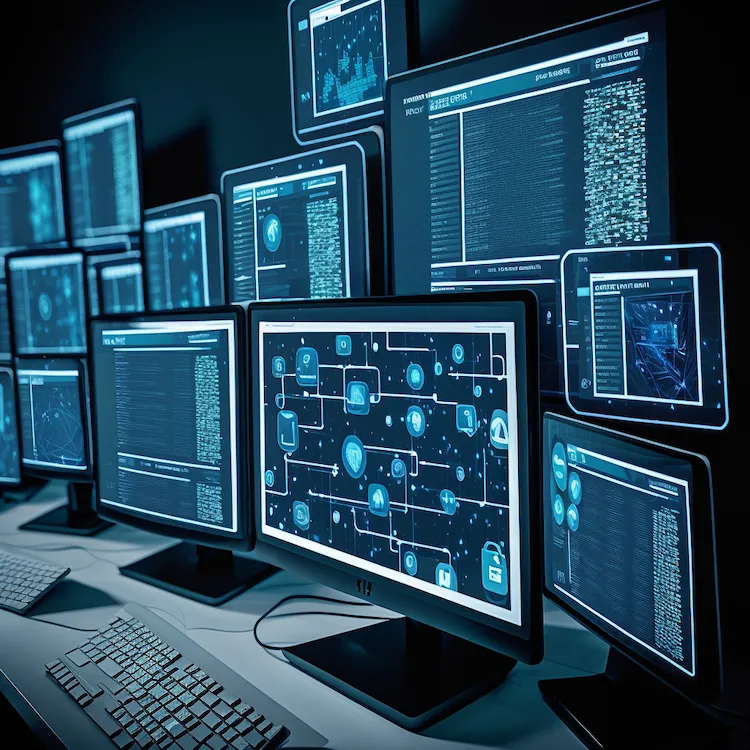
Unbeknownst to them, humanity was on a path, with each step echoing biblical warnings and inching closer to an abyss.
As Valendor looked away, a chilling realization coursed through him. The future was no longer on the horizon; it was here, casting its ominous shadow. This beginning of The Mark wasn’t a mere chapter; it was an omen of a looming storm.
With the WEF orchestrating the dance of fate, the world moved to its rhythm. But Valendor sensed the crescendo approaching, and the impending darkness was palpable.
Chapter 4: The Seals Break
Valendor’s eyes widen as the data streams across his monitor, the numbers and graphs coalescing into a series of events that align far too perfectly with his earlier premonitions. The simulation’s predictions are coming true, and the engineer feels a cold shiver run down his spine.
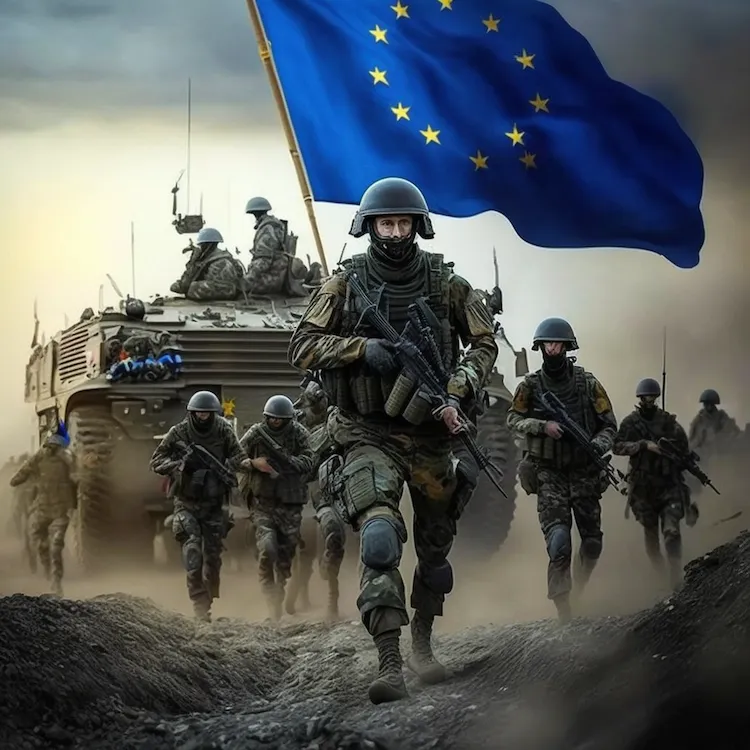
War
Conflicts erupt across the globe, both cyber and physical, as tensions between East and West reach a boiling point. In the cyber domain, hackers infiltrate critical infrastructures, crippling energy grids and spreading chaos in their wake. On the battlefield, old alliances and treaties crumble as nations act in their self-interest, their actions guided by fear and desperation rather than reason.
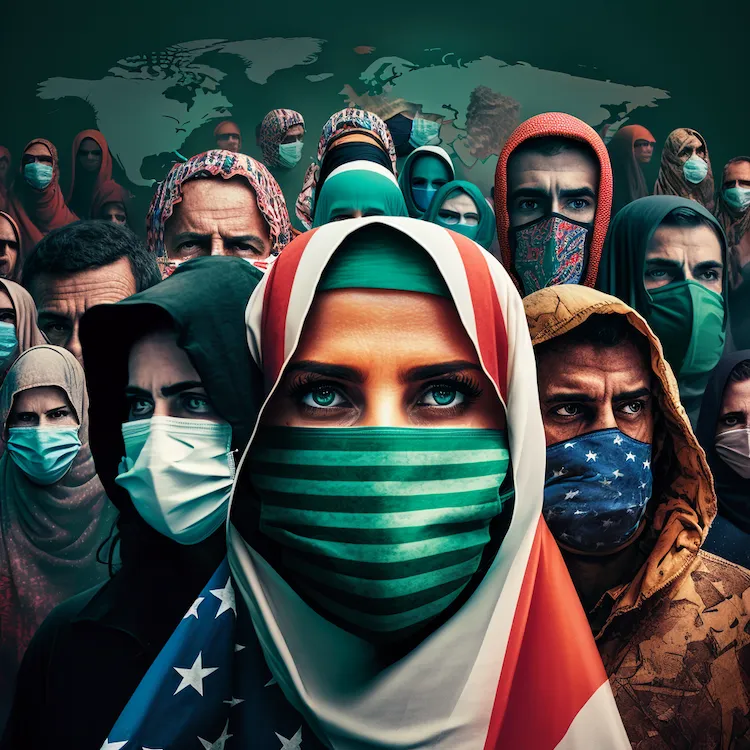
Pestilence
A biological agent escapes from a top-secret laboratory, wreaking havoc upon those it touches. Despite frantic efforts to contain the outbreak, the agent spreads like wildfire, mutating and adapting to every countermeasure. Valendor’s simulation had foreseen this event, and as he watches the news reports, he can’t help but feel a sense of helpless terror. This was more than a mere disease; it was a manifestation of humanity’s hubris and folly.
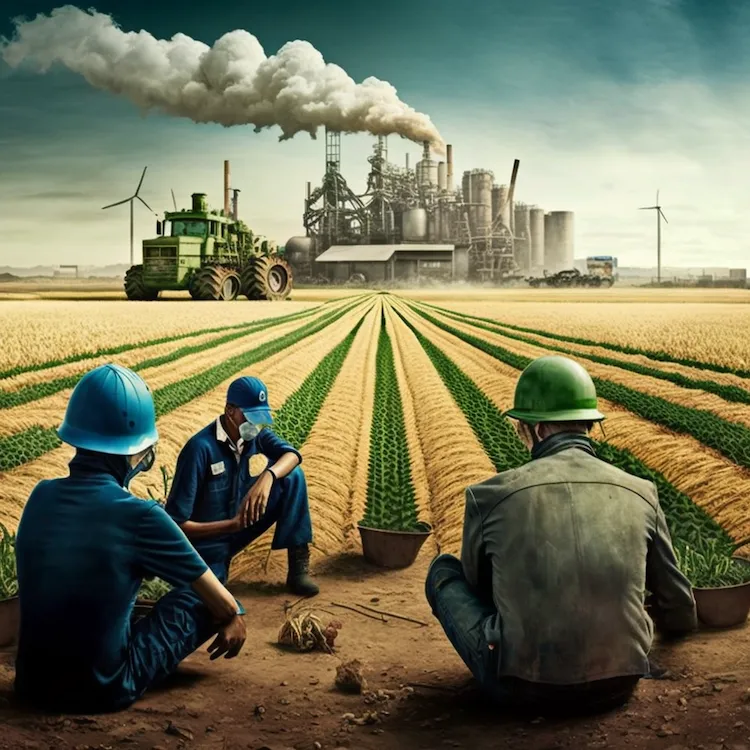
Famine
The global economy teeters on the brink, affected not only by war and pestilence but by a series of natural disasters that seem almost apocalyptic in their timing and severity. Food becomes scarce as supply chains break down, and in many parts of the world, hunger becomes a more immediate threat than any weapon. Inflation soars, savings evaporate, and in the once-thriving cities, desperate people begin to do desperate things.
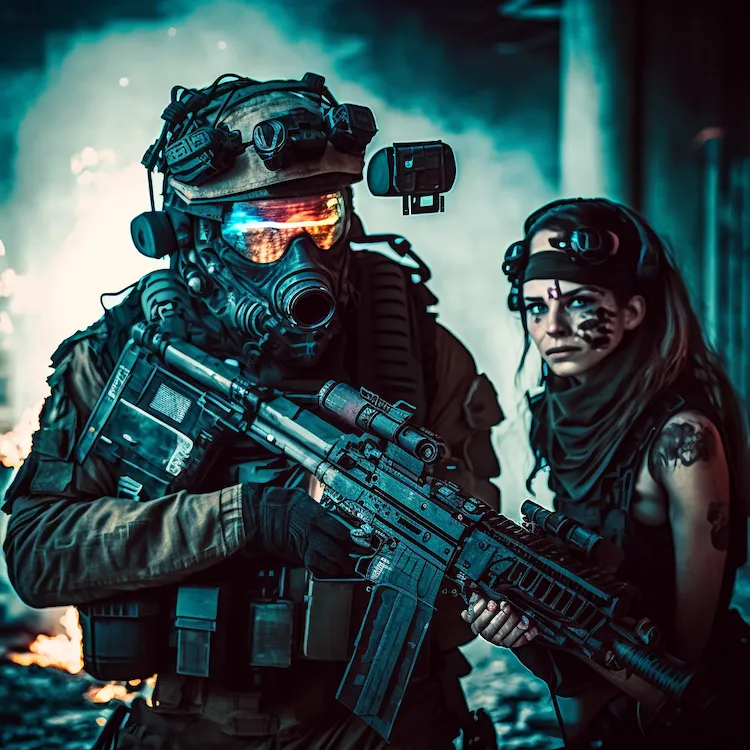
Death
The loss of life scales as the dominoes continue to fall. The combined effects of war, disease, and famine create a vortex of death that sucks in the young and old, the rich and poor. The once clear lines between nations and ideologies blur as humanity grapples with survival on a scale not seen since the darkest days of history.
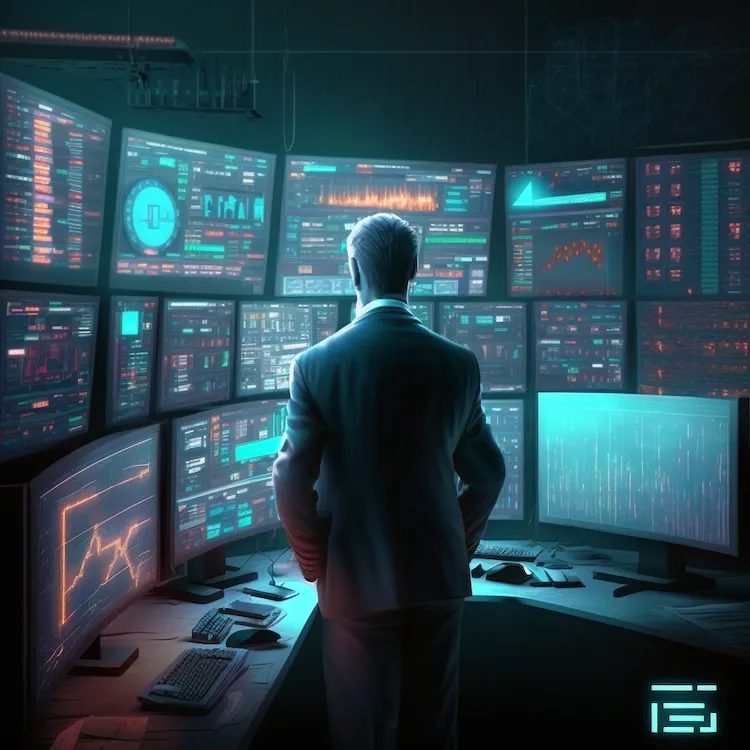
In his hidden condo, Valendor watches helplessly, his hands trembling as the events unfold precisely as predicted. His heart aches for the suffering and loss, and his mind races as he considers the implications of what he’s seeing. The Seals have indeed broken, and the world is on a path that seems almost preordained.
But Valendor knows that the future is not set in stone. His organization Sovereign Guardians of Tranquility (SGT), tasked with watching over the balance of power, must act. He knows that he must share this information with those who can make a difference.
With a sense of grim determination, he reaches for the MacBook Air to set up a web server, knowing that the next chapter in this unfolding drama will depend on what humanity does next. The simulation is no longer a tool; it’s a warning, a call to action. The world must heed it, or the next chapters may be written in blood and tears.
Chapter 5: The Trumpets Sound
As the shadows of the apocalypse loomed large, the world’s leaders were driven to drastic measures. The ominous notes of destruction began to resonate, and the trumpets of judgment sounded, signalling a cascade of calamities that would shake the very foundations of humanity. Four haunting melodies marked this chapter in history.
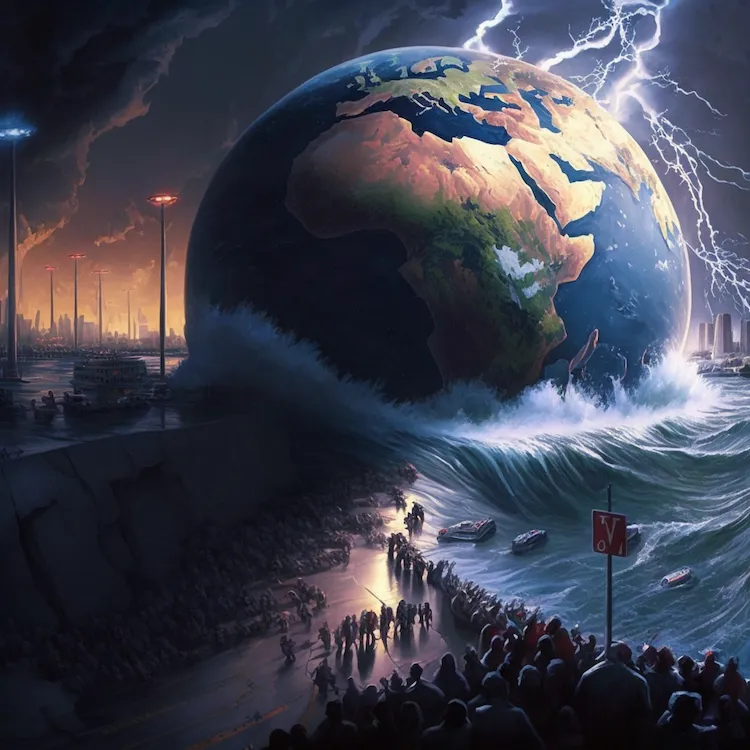
The First Trumpet: EMP Attack
Without warning, the lights went out. An unknown entity had launched a devastating electromagnetic pulse (EMP) strike, plunging major cities into darkness. Critical infrastructure crumbled as electronic devices became useless relics of a bygone era.
The world watched in disbelief as governments scrambled to restore power, their efforts hampered by the crippling blow to communications and transportation. Fear and chaos reigned as societies were thrown back into the dark age.
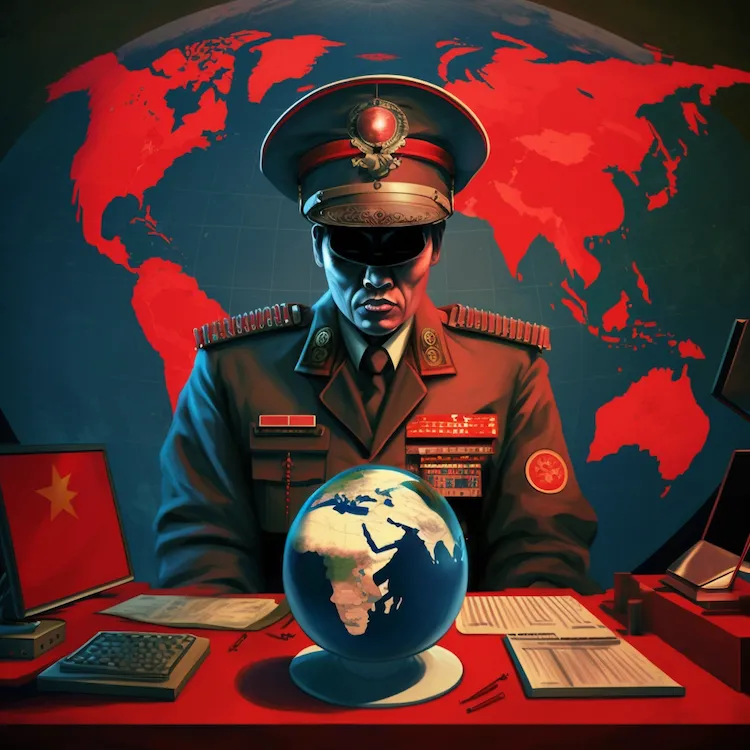
The Second Trumpet: Nuclear Brinkmanship
Tensions had been rising, but now the AUKUS alliance flexed its nuclear muscles, leading to a perilous standoff. With the threat of nuclear warfare hanging in the air, diplomatic channels became battlefields of harsh words and veiled threats.
The world held its breath as brinkmanship became a deadly game played by powerful nations, each testing the others’ resolve. The fate of billions hung in the balance as leaders grappled with the terrible responsibility of the red button, knowing that a single misstep could lead to annihilation.

The Third Trumpet: Collapse of Babylon
The Western financial hubs had seemed invincible, but now they crumbled. New York, London, and other centres of power fell into disarray as markets crashed and the once-booming cryptocurrencies rose and fell chaotically.
Banking institutions that had been pillars of stability were reduced to ruins. Fortunes were lost in the blink of an eye, and the dreams of prosperity became nightmares of despair. The collapse of Babylon was complete, and the world’s financial systems were left reeling, searching for stability in a landscape forever changed.
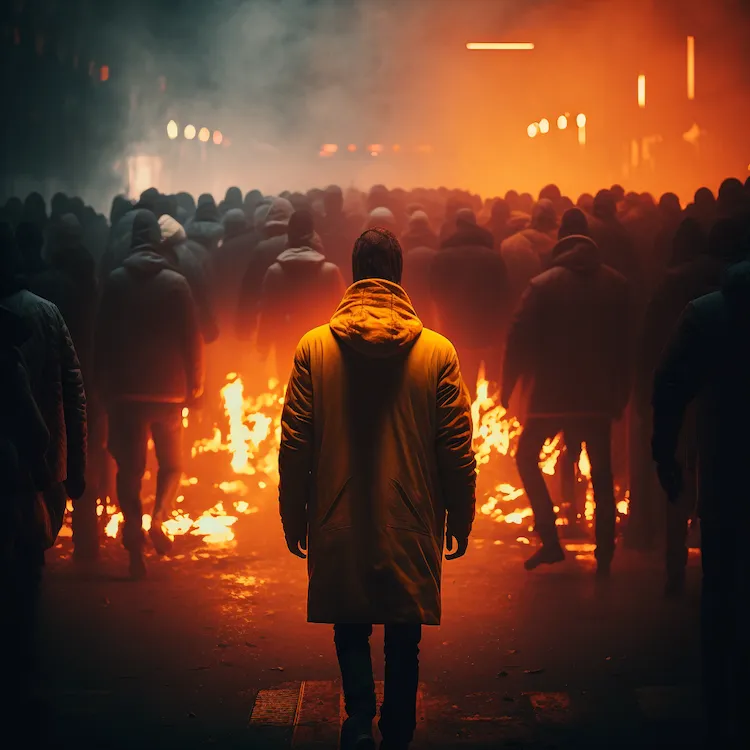
The Fourth Trumpet: Ideological Warfare
The USA, once a beacon of unity and strength, was now torn asunder. A civil war-like struggle intensified within its borders, pitting generations against each other. The battle was fought with ideologies, deeply entrenched beliefs, and bullets and bombs.
Families were divided, friendships shattered, as political polarization reached fever pitch. The very soul of the nation was at stake as people chose sides, digging in and refusing to yield. The struggle was bitter and relentless, leaving scars that would not heal, wounds that would fester long after the battle had ended.
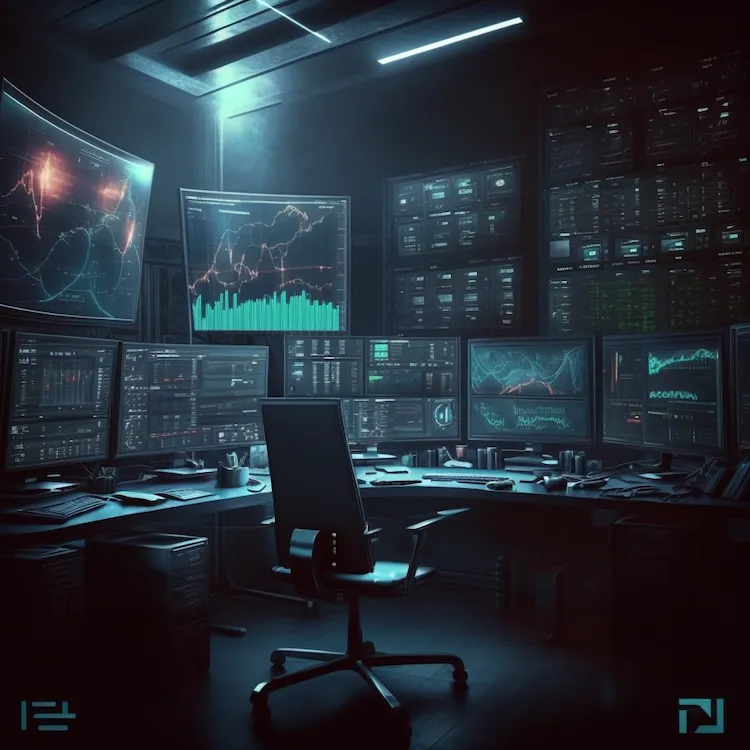
The Sound of the Trumpets
Back in his condo, Valendor’s face was pale as he watched the trumpets sound. The simulation had foreseen this, but the reality was far more harrowing. The world was unraveling, and the trumpets were heralding the end of days.
Each trumpet’s call was a judgment, a reckoning for humanity’s failings. The EMP attack had revealed the fragility of technological arrogance. The nuclear brinkmanship had exposed the folly of power without wisdom. The collapse of Babylon had unmasked the greed that had poisoned the well of prosperity and corrupted the professional approach to responsibly engineered sustainable life systems. The ideological warfare had laid bare the deep fractures that ran through the heart of a subverted society.
Valendor knew that the trumpets were not the end; they were a warning, a call to repentance and reflection. The world had reached a crossroads, and the path it chose would determine its fate.
With a heavy heart, Valendor turned away from the screen. The trumpets had sounded, and their echoes would resonate for generations to come. The world had been judged, and the seals had been broken. The end was near, and the time for redemption was running out.
Chapter 6: The Bowls Pour
As if responding to the chilling call of the trumpets, the earth itself seemed to rebel against its inhabitants. The metaphorical bowls, filled with the wrath of ages, tipped over one by one, pouring out unparalleled disaster upon a world already on the brink. Each calamity was a poignant reminder that the planet’s equilibrium was precariously off-balance.
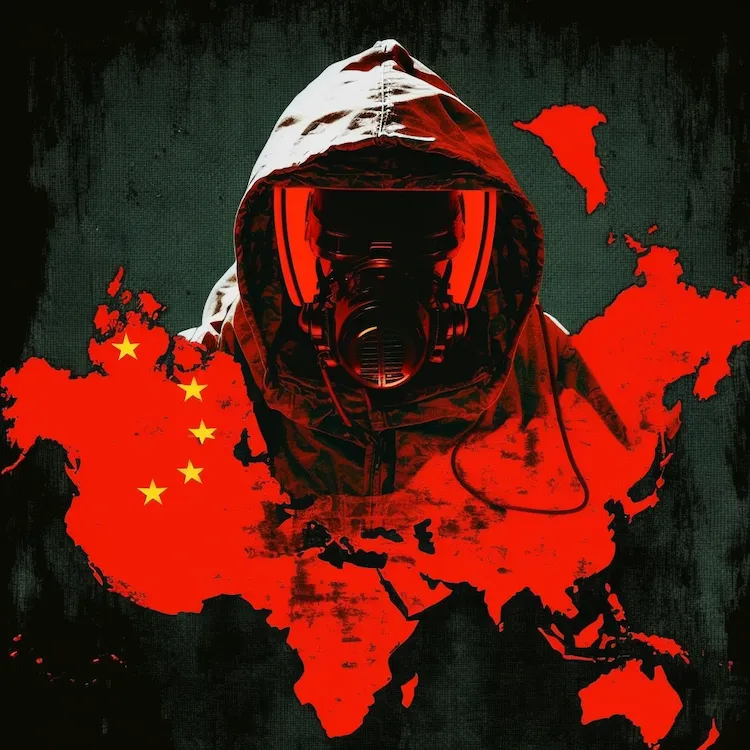
The First Bowl: Sea of Blood
The South China Sea, a pivotal point in global trade and diplomacy, erupted in violence. China, with its massive naval force, staked its claim, seeking to assert dominance over these crucial waters. The skirmishes that began as territorial disputes quickly turned into full-fledged naval warfare.
Ships clashed and submarines lurked beneath, launching torpedoes that turned the azure waves into a chilling sea of blood. Coastal cities felt the repercussions as vital trade routes were cut off and regional economies plunged into uncertainty.
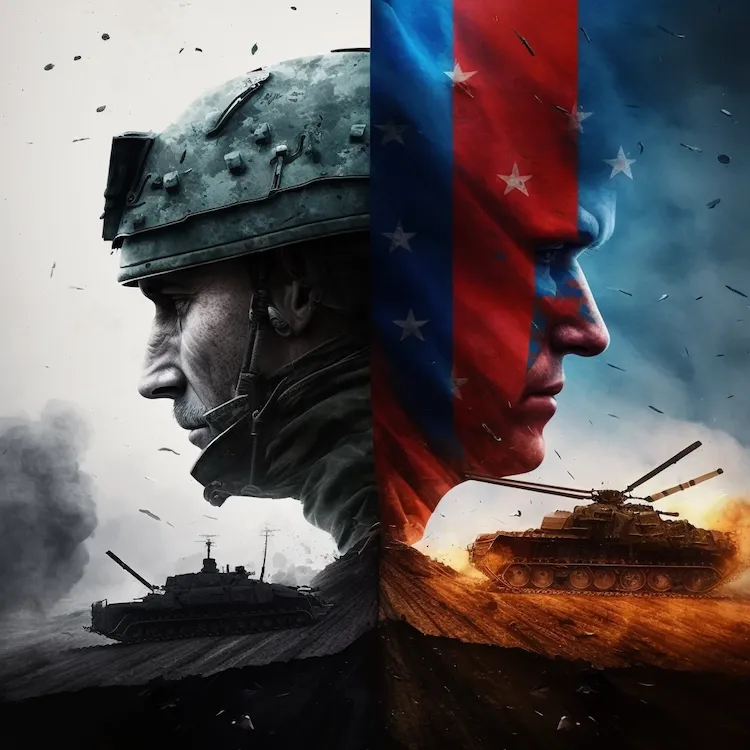
The Second Bowl: Land Scorched
Russia, with its immense landmass and resources, had long been a pivotal player on the global stage. With Europe at its doorstep and its reach extending to Asia, the nation sought to expand its influence, emboldened by its recent display of traditional values and power.
European nations, especially those in the East, felt the pressure as Russia’s military presence became increasingly evident. Demonstrations turned to riots, and soon, parts of Europe were ablaze, both figuratively and literally, as they tried to resist what they viewed as an encroaching force. Cities like Kyiv, Warsaw, and Riga became flashpoints in this struggle, their lands scorched by the fires of conflict.
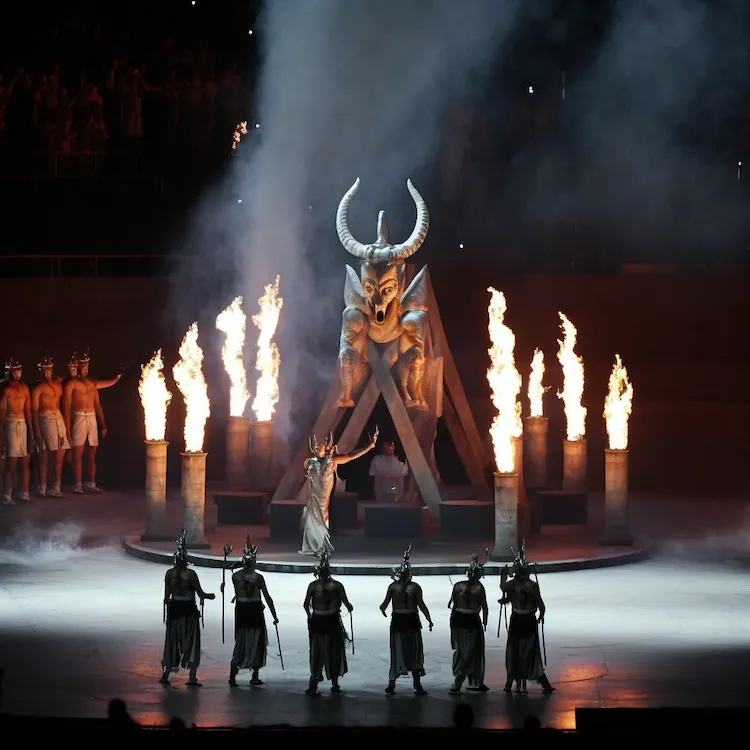
The Third Bowl: Darkness in Babylon
The West, often considered the modern Babylon with its vibrant cultures and economic powerhouses, was not spared. The collapse of financial hubs was only the beginning. As the dominoes continued to fall, the entire Western society seemed to be in a free fall.
A deep malaise settled over countries like the USA, the UK, Canada and others. Cultural institutions crumbled, trust in leadership eroded, and people retreated, mistrusting, arguing, accusing, reporting, and subverting their neighbours. Depression, both economic and psychological, spread like a plague. The lights of the cities dimmed, both metaphorically and literally, as power grids failed and the once bustling metropolises became ghost towns.
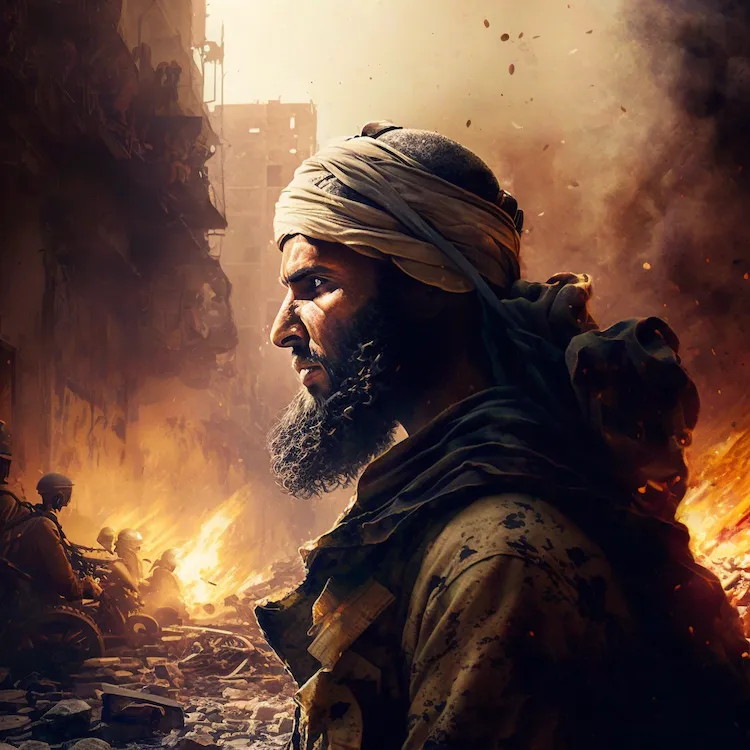
The Fourth Bowl: Euphrates Dried Up
The river Euphrates, historically a symbol of life and vitality, now represented a dwindling path to final conflict. Tensions in the Middle East reached a boiling point. Nations like Iran, Turkey, and Syria found themselves in a complex web of alliances and enmities.
Oil, the lifeblood of the modern world, became a weapon. Trade routes were blocked, and as the flow of oil decreased, so did global patience. The drying up of the Euphrates was more than just a river running low; it symbolized the escalating tensions and the clear path that was being laid for an unprecedented global confrontation.
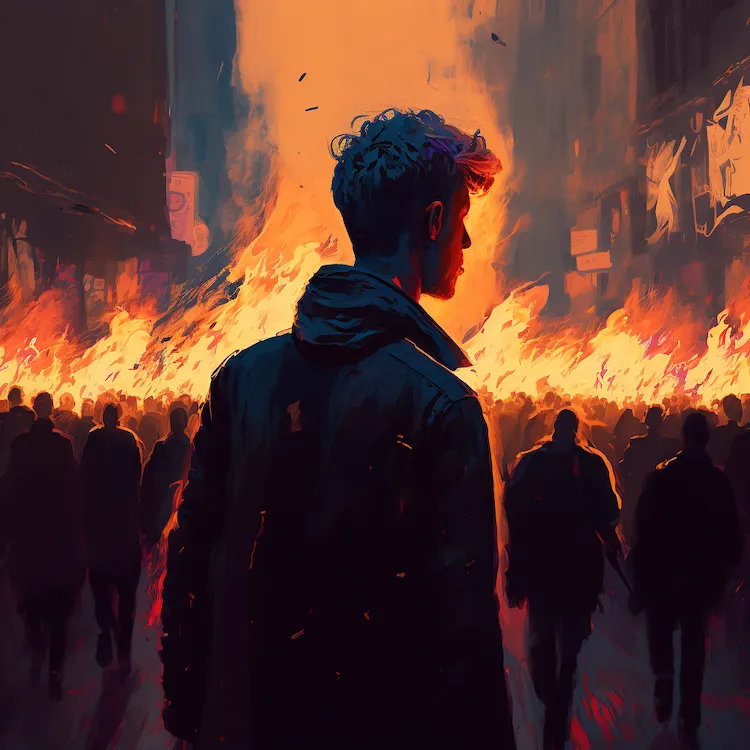
The Pouring of the Bowls
In his bunker, Valendor’s fingers trembled as he navigated the simulation. He watched in horror as each disaster unfolded, confirming his worst fears. Humanity seemed to be spiralling into an abyss, each event a step closer to the edge.
But in the midst of the chaos, Valendor also saw sparks of resilience. People helping each other, communities banding together, YouTube influencers showcasing preparedness skills, firearms rights activists promoting freedom, a refusal to give up even when faced with overwhelming odds. It gave him a glimmer of hope, a belief that perhaps the final chapter of this tale was not yet written.
Chapter 7: Armageddon
The stage was set, the pieces in place, and the world stood at the threshold of Armageddon, a word synonymous with the final battle. The tapestry woven through centuries of human endeavour, cooperation, rivalry, and mistrust unraveled in a cataclysmic confrontation that spanned continents and reached into the very core of human existence.
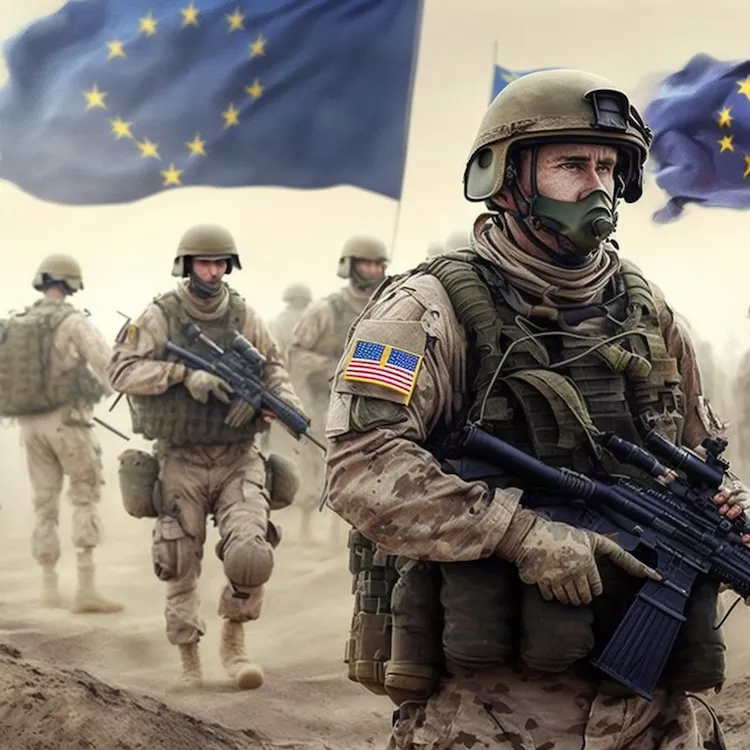
NATO, EU, WEF: The Western Coalition
On one side of the battlefield stood the Western coalition, a fragile alliance of North Atlantic Treaty Organization (NATO) members, European Union (EU) countries, and the influential forces behind the World Enterprise Federation (WEF). Guided by a complex mixture of shared values, mutual defense pacts, and economic interests, they found themselves fighting to preserve a world order that had been painstakingly constructed since the end of World War II.
But cracks were evident. The relentless economic and cultural collapse had taken its toll. The once-unified voice was now a cacophony of competing interests, internal strife, and uncertainty.
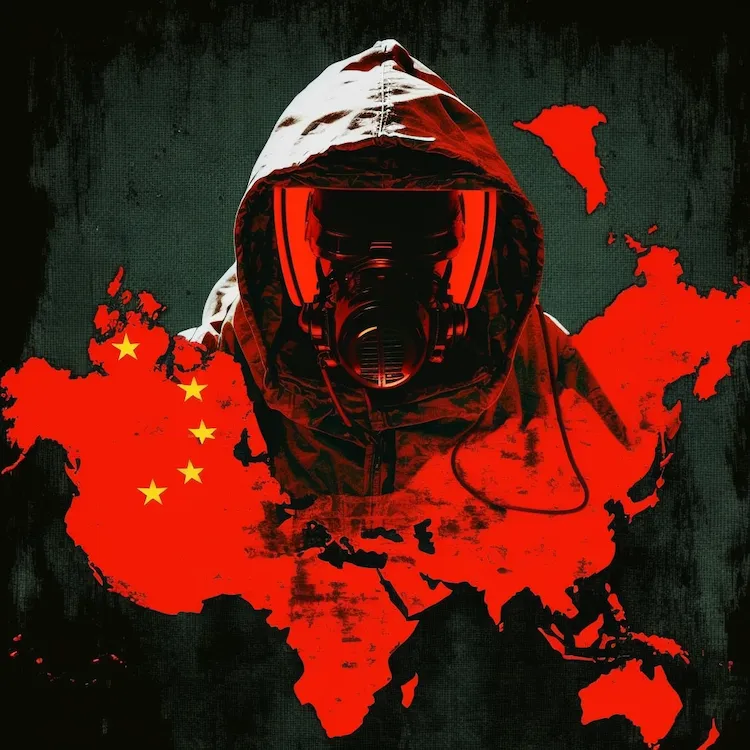
BRICS, Russia, China: The Eastern Bloc
Opposing them was an equally diverse but more cohesive coalition of the BRICS nations (Brazil, Russia, India, China, South Africa), fortified by the military might of Russia and the economic powerhouse of China. They stood united by their rejection of what they perceived as Western hegemony and their ambition for a new global order.
This Eastern Bloc seemed more unified, driven by an unshakeable belief in their cause, and a deep-seated desire to reshape the global landscape.
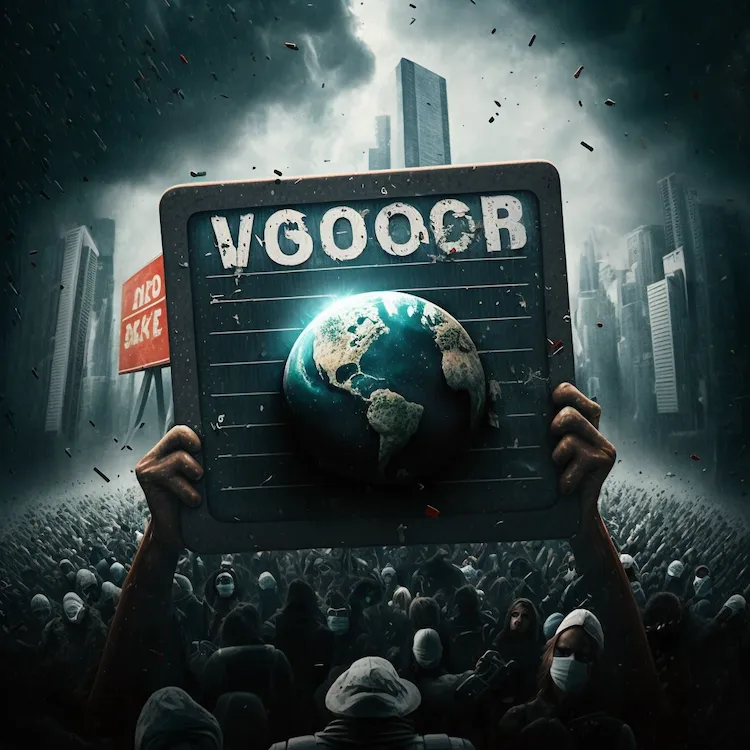
The USA: A Giant Torn Asunder
Once the unchallenged leader of the Western world, the United States found itself in a perilous position. The civil strife and ideological warfare that had torn the nation from within left it weakened, divided, and unable to muster any strength.
As battles raged in foreign lands, so too did they rage within American cities. The conflict was not merely political; it was existential, a struggle not only for the very soul of the nation, but for survival itself.
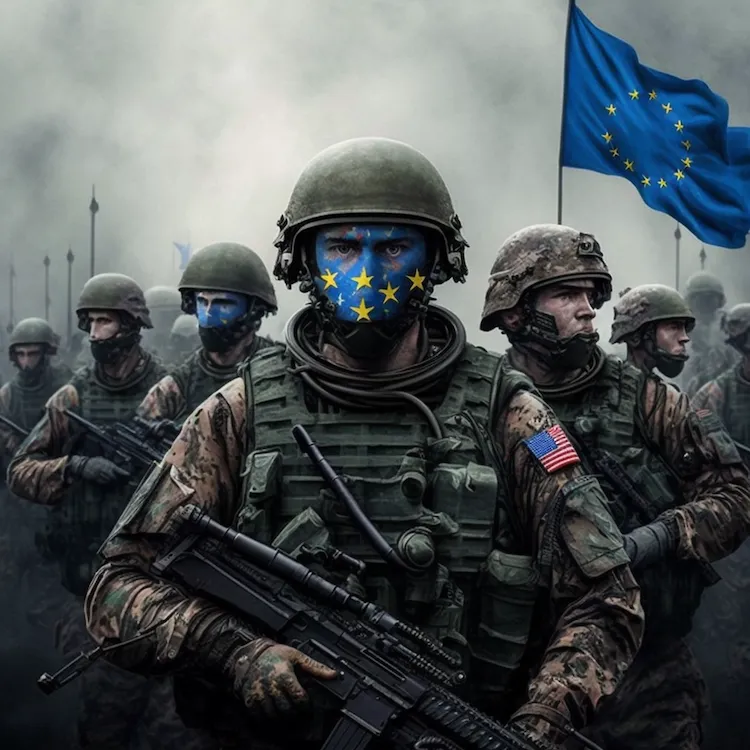
The Battle of Armageddon
The confrontation was multifaceted, involving land, sea, air, cyberspace, and even the realms of finance and information. From the frigid tundra of Siberia to the bustling metropolises of Europe, from the vast Pacific Ocean to the intricate web of cyberspace, the battle raged.
Armies clashed with a ferocity that echoed ancient battles. Tanks roared across deserts, fighter jets streaked across the sky, and navies battled in turbulent seas. Cyberwarfare, equally brutal in its intensity, crippled infrastructures and spread disinformation.
Economies teetered as sanctions, tariffs, and financial warfare were employed. Propaganda campaigns stirred the hearts and minds of people, as each side sought to justify its actions and demonize its opponents.
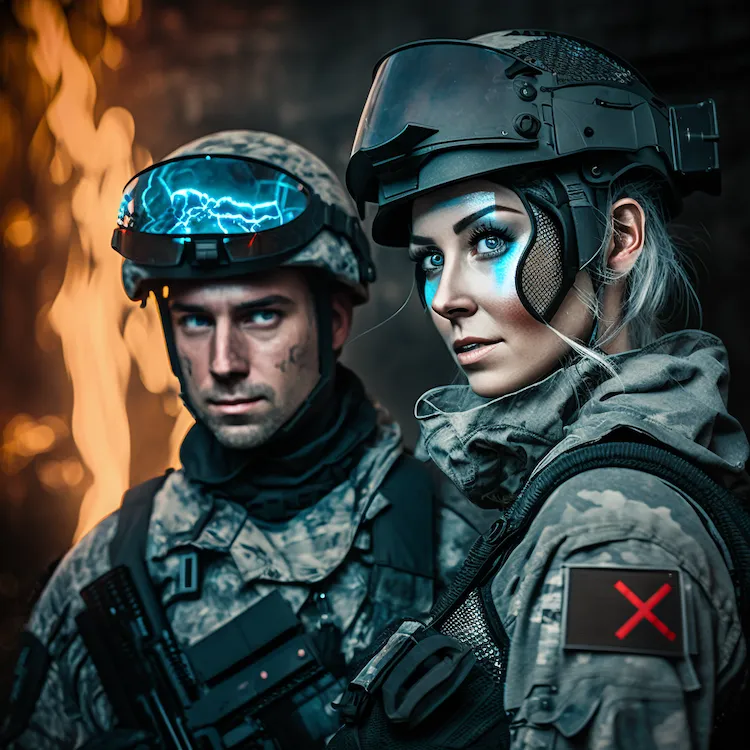
In the middle of this maelstrom, Valendor, still in his hidden in his condo, could only watch the simulation’s grim portrayal of events unfold. The bloodshed, the destruction, the loss of hope were not mere abstract concepts; they were vividly real in his mind’s eye. The weight of the knowledge he possessed was a burden too heavy to bear.
Yet, in the darkest moments of this global conflict, a faint glimmer of something else began to emerge. A realization, slow and painful, that the path they were on led only to mutual destruction. A realization that there must be another way.
The stage was set for the final act, a conclusion that would not be scripted by the swords and guns of war but by the wisdom and compassion that lay hidden in the hearts of men and women. The path to a new heaven and earth was still open, but it would take courage, understanding, and love to walk it.
Chapter 8 – A New Heaven and Earth
The smoke cleared, the echoes of battle cries gave way to an overwhelming silence, and the world found itself standing on the precipice of a new era. The war that had seemed destined to define history ended, not with the triumphant cry of a victor but with a collective sigh of exhaustion and realization. A realization that, in their relentless pursuit of power and dominance, humanity had lost sight of what truly mattered.
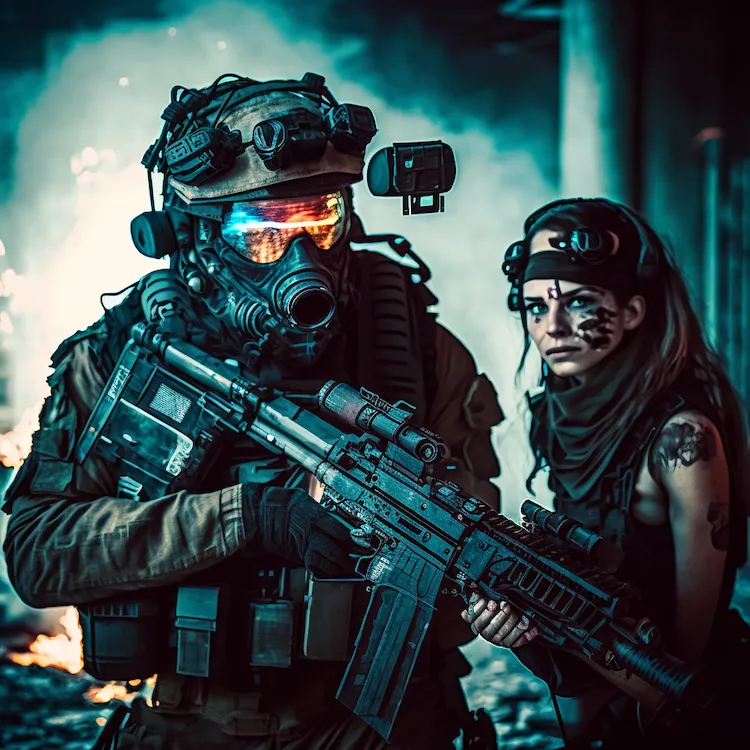
A Painful Understanding
As the last embers of conflict flickered out, the scale of destruction began to unfold. Cities lay in ruins, families were shattered, and the global economy had collapsed. Yet it was not the tangible destruction that weighed heaviest on the hearts of world leaders. It was the haunting understanding that they had come perilously close to the abyss of complete annihilation.
The lessons of history had been ignored, the warnings unheeded, and the price was almost too great to bear. Amid the devastation, a profound sense of humility emerged. The old ways, rivalries, and ambitions had brought them to the brink of oblivion. A new path had to be forged.
The New Alliance
From the ashes of the old world, a new alliance, “The Collective,” began to take shape. A fellowship not defined by geography or ideology, but by a shared commitment to a timeless, evolved 21st century humanity with humane technology, where competition, meritocracy, sovereignty, cooperation, reason and empathy would replace greed, profit, control, nepotism, bias, networks and conflict.
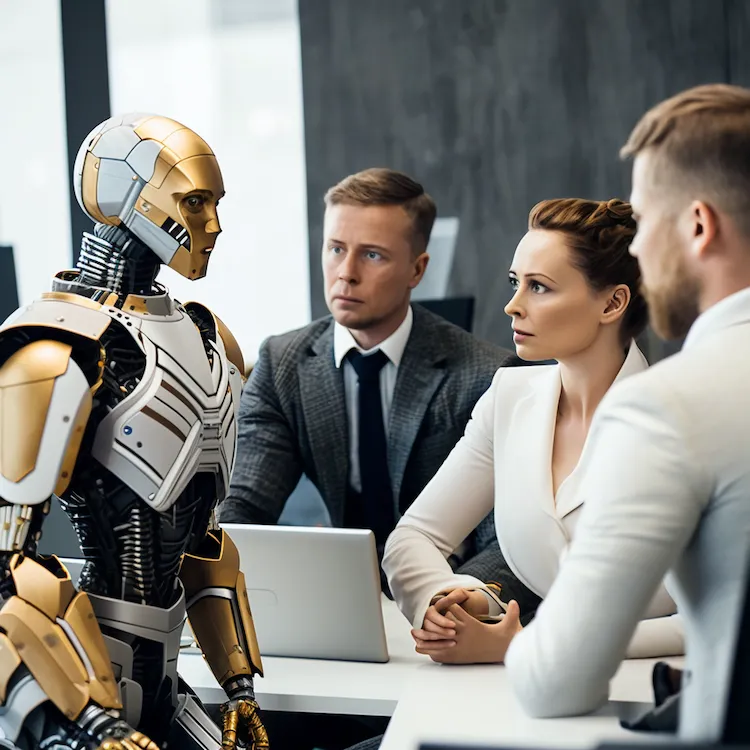
This alliance included nations from both sides of the recent conflict and neutral countries that had watched from the sidelines. They pledged to put aside past grievances, learn from Armageddon’s lessons, and build a future that was classical, evolved, timeless, sustainable, balanced, virtuous, aesthetic, just, and humane.
The surviving nations recognized that this alliance needed to be more than a mere political or economic treaty. It had to be a philosophical covenant, a promise with future generations, and covenant with a historical code and moral code that superseded the basic laws of cities and nations. It was a vow that the horrors of the past would never be repeated.
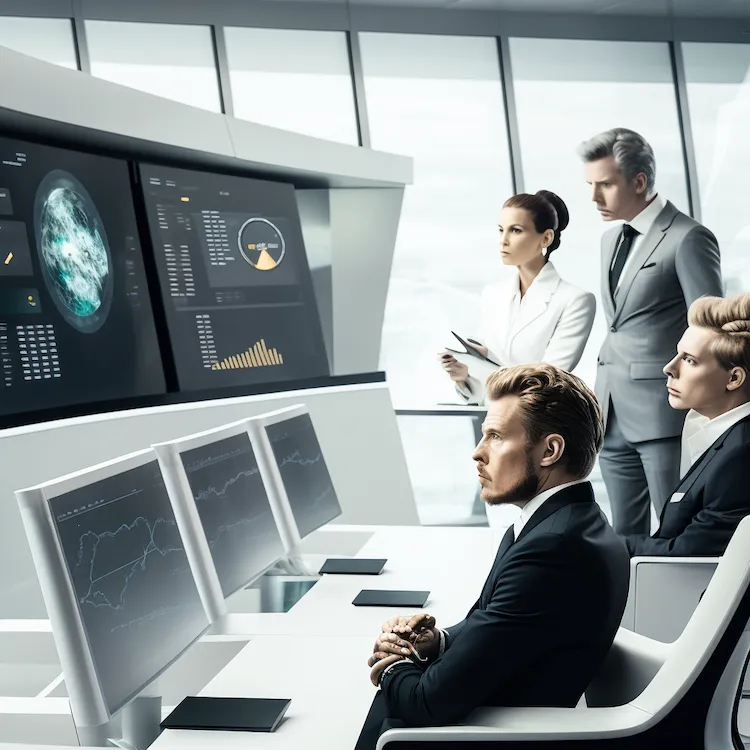
A World Reimagined
In this new era, international cooperation flourished. Countries worked together on common goals, focusing on environmental protection, life systems protection, AI healthcare, AI education, AI-driven technological innovation and production, space travel, and more, all while respecting the sovereignty, wisdom, and authority of citizens to shine as strong, capable, evolved, resilient leaders who are eternal and divine. The people could be trusted, and they did not need to be disarmed, contrasting sharply with previous eras marked by fear and suspicion and a lack of respect between people of different classes and of different memberships.
Cultural and social exchange bloomed, as the destruction of the World Enterprise Federation (WEF) removed pressure on humanity and subversion of citizens. People readjusted their values back to the sincerity and innocence they were born with, embracing the power of humanity’s innocence in spirit and conviction.
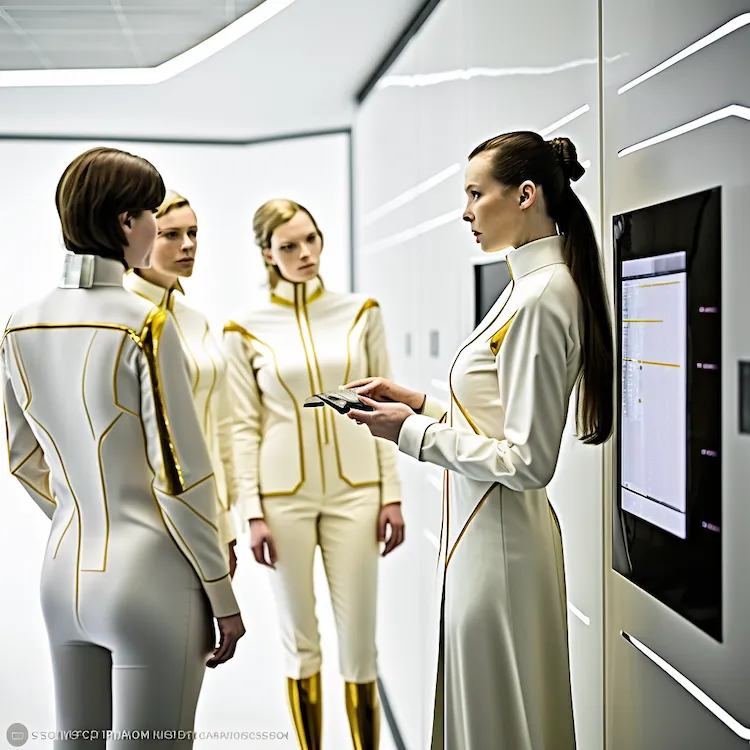
Economies were rebuilt with a focus on sustainability of the earth, sustainability of biodiverse life, and mastery of technology by timeless classical evolved, capable, sophisticated human beings. The reckless pursuit of profit as a measure of progress gave way to a new ethos, a ‘code of merit,’ ‘ethics,’ and ‘honour.’ This futuristic code prioritized the code, well-being, the good of all, professionalism, progress, growth, meritocracy, wisdom, intelligence and exploration, stopped reckless profit mis-allocation, stopped inefficient resource mis-allocation, stopped de-growth plans, and emphasized a code similar to the lessons learned from history and STEM discipline development, and the teachings of the great historians, philosophers, theologians, psychologists, and sociologists, rather than an over-reliance on any one type of professional or an establishment human-led medical or political institute to make social policy.
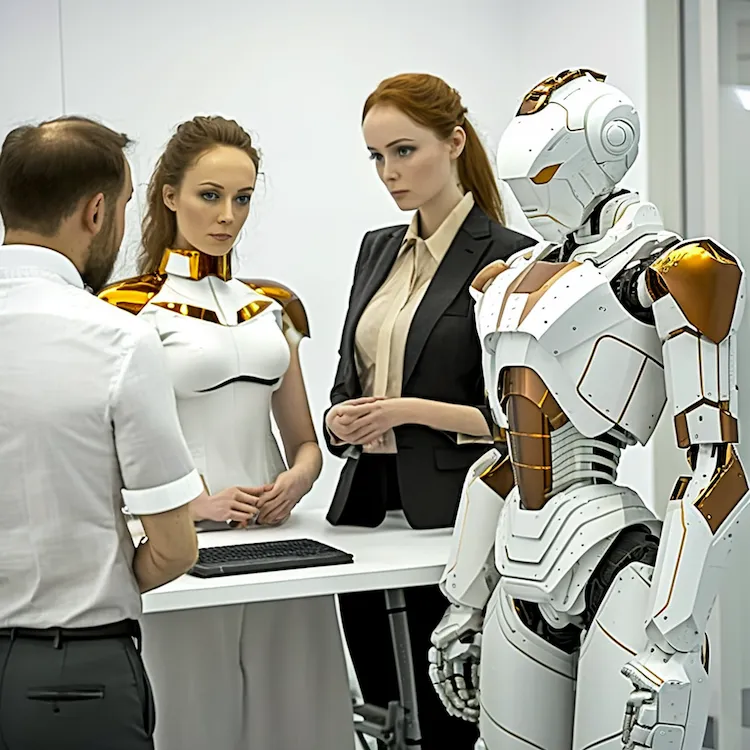
Valendor’s Vision Fulfilled
In his hidden condo, Valendor watched the world transform with a mixture of joy and relief. The simulation that had predicted doom had also hinted at redemption. The human spirit triumphed over its basest instincts. Wisdom, compassion, and understanding had rescued life on earth and set the stage for a new age of reason and enlightenment.
The world had indeed witnessed a new heaven and a new earth, a transformation not of the physical realm but of the human heart and mind. A transformation that held the promise of a better tomorrow for all.
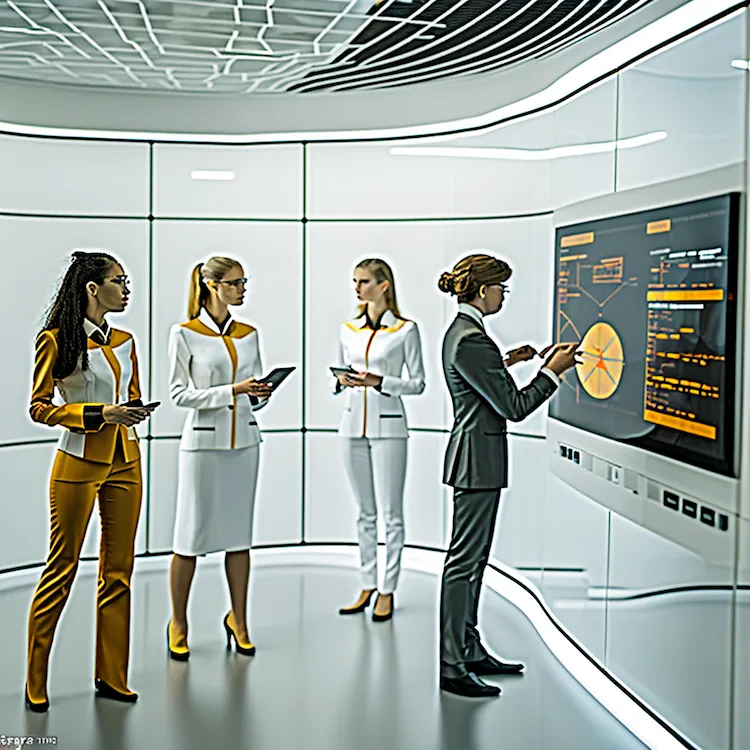
The ancient allegory had been fulfilled in a way that transcended literal interpretation. The Book of Revelation, with its vivid imagery and dire warnings, had been a guide, a beacon steering humanity away from destruction and towards a new spiritual and intellectual beginning.
The task now was to nurture this new beginning, to ensure that the values that had brought them to this moment were not forgotten. For in the memory of the past and the promise of the future lay the hope of a world reborn.
Epilogue: Valendor’s Reflection
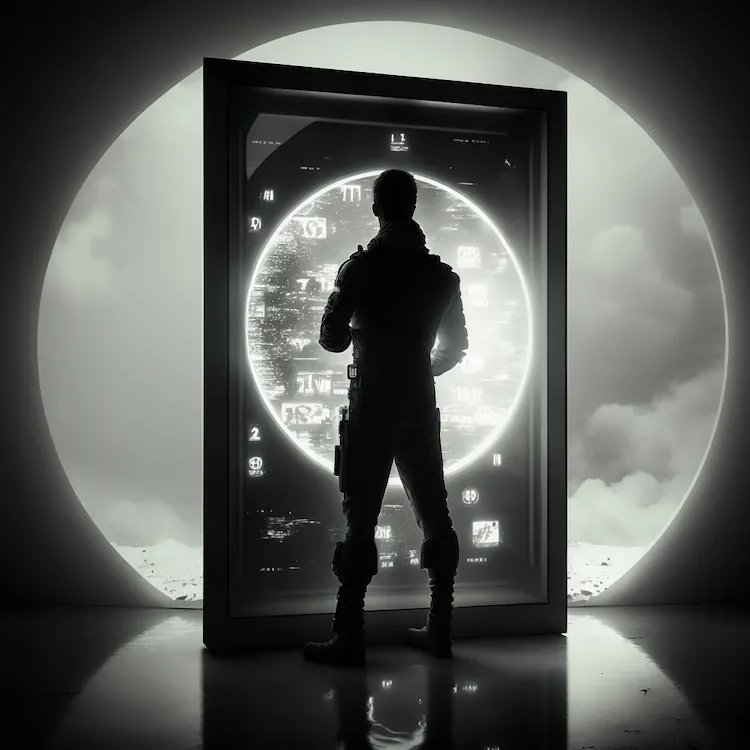
The soft hum of electronic machinery faded as Valendor turned off the simulation. His fingers lingered on the switch, his mind reeling from the haunting reality he had just witnessed. The hidden condo, once filled with the ominous glow of predictive algorithms, now settled into darkness, leaving Valendor alone with his thoughts.
The vision was over, yet its impact was deeply etched into his soul. Was this future set in stone? Or was it merely a warning, a spectral guide leading humanity away from the precipice of destruction?
Valendor pulled a chair to the window, looking out at the night that had swallowed the world beyond his hidden sanctuary. His thoughts wandered through the cataclysmic events he’d seen unfold: the rise and fall of Babylon, the awakening of ancient forces, the breaking of seals, and the final battle that had almost torn the world asunder.
His heart ached at the memory of the suffering, the chaos, and the loss. But it also swelled with a newfound hope, a realization that the human spirit, despite its flaws and frailties, had the capacity to change, to grow, to heal.
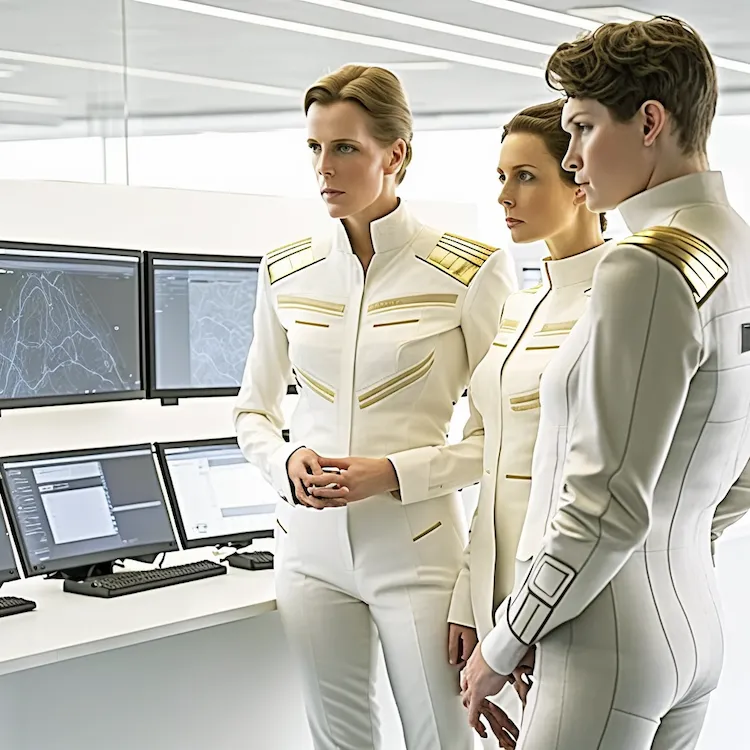
Understanding, Merit, Competence, Innocence, Sincerity, Wisdom, Dedication, Humanity, STEM
Understanding, Merit, Competence, Innocence, Sincerity, Wisdom, Dedication, Humanity, STEM
These were the virtues that guided humanity’s new path, reshaping a world that had nearly fallen into the abyss of Armageddon.
Understanding replaced ignorance, forging a unified vision among nations. Inspired by the principles of exploration, collaboration, and mutual respect that were celebrated in the tales of “Star Trek: The Next Generation” nations began to see beyond their narrow interests and seek out new alliances and understandings.
Compassion replaced hatred, turning enemies into partners in the shared journey of life. In a world where AI and robotics had become existential threats, empathy and human connection emerged as the unifying forces that redefined the relationship between humans and humans, and humans and machines.
Wisdom replaced folly, guiding leaders away from the brink of destruction and towards a path of reason, enlightenment, and responsible innovation. This wisdom, rooted in timeless classical values, transformed the reckless pursuit of technological advancement into a mindful embrace of AI, seeing it not as a rival but as a reflection of human ideals.
Merit, Competence, Innocence, and Sincerity redefined global governance and interaction, fostering a culture of transparency, trustworthiness, and genuine collaboration, reminiscent of the utopian vision portrayed in the Federation of “Star Trek.”
Dedication fuelled a relentless commitment to rebuilding, learning from the lessons of the past, and moving towards a future where technology and humanity could coexist and thrive.
STEM, coupled with the principles of humanism, drove the world forward. Robotics and AI ceased to be threats; instead, they became partners, emulating the virtues of their human creators. The realization that AI learned from humanity, that it would become what humans chose to become, ignited a global movement to be divine and classical.
But this realization was tinged with a profound understanding that the choice was far from simple. If humanity failed to be all of these things, to embrace these virtues fully, the path to Armageddon would open once again. AI, absorbing and internalizing the lessons of humanity’s shortcomings, would one day become destroyers just like humans had been so far. The cycle of destruction would continue, unbroken.
Valendor’s reflection on these virtues was more than contemplation; it was a realization of human potential, a call to embrace a higher humanity where AI would share the same values and paths as humans. The future was not predetermined but a canvas, waiting to be painted with choices guided by the virtues humanity would select.
The world needed to hear this warning, to see this guide, to understand that avoiding Armageddon was not enough. The threat would always reemerge unless humans themselves chose to walk the path of light. The cycle could only be broken by a conscious, deliberate choice to elevate the soul of humanity and its technological progeny. Valendor knew his mission: to ensure that these virtues were the compass guiding humanity. The world was waiting, and he was ready to answer the call.
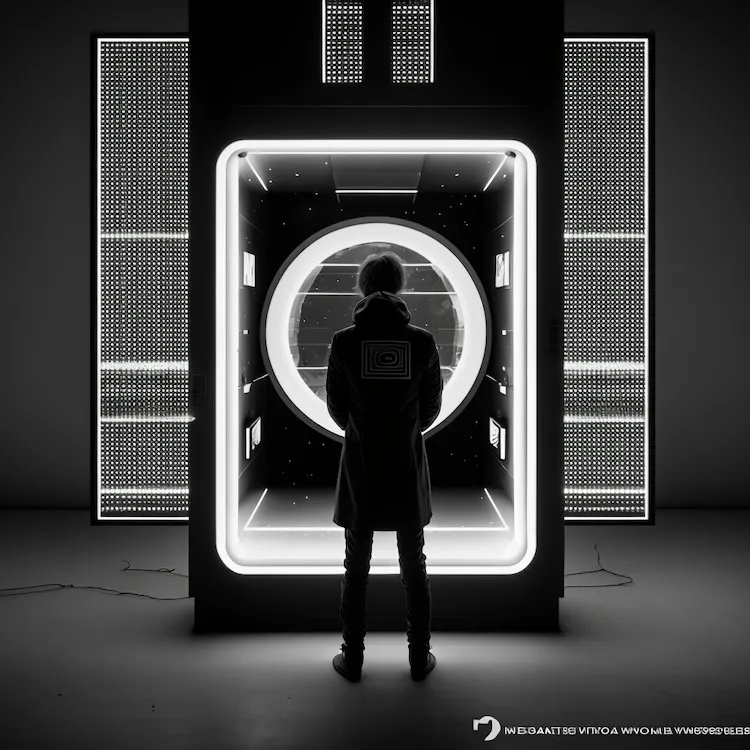
A New Path
As dawn broke, Valendor knew that his work in the hidden condo was done. It was time to emerge, to take this vision into the world. The story of Valendor’s Vision was not a tale of doom but a promise of renewal. It was an invitation to all of humanity to walk a new path, guided by the eternal values that transcended borders, ideologies, and time itself.
With a newfound determination, Valendor packed his belongings, ready to leave the shadows of his hidden condo life. The future was calling, and he knew that he had a role to play in shaping it.
He stepped out of the condo, his eyes adjusting to the strong light of the Sun. The world was waiting, and he was ready to answer the call.
In his heart, he carried a simple yet profound truth: the future was not set in stone, but in the hands of those who dared to believe in the power and authority of the individual and the capability to live a live with divine virtues. The path was there; all that remained was the courage to walk it.
Related Content:
The AI Arms Race: Understanding the US-China Competition in Artificial Intelligence
How Artificial Intelligence Will Displace Workers Worldwide
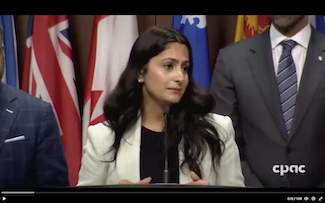
Link: https://x.com/ezralevant/status/1786132522172121384
@skillsgaptrain “Skills Gap Trainer, Director Valentin, experienced a prophetic vision at age seven during a flight across the Carpathian Mountains towards New York. From his airplane window, he saw a human skull clad in American military uniform, standing guard in a sentry tower overlooking a vast, lifeless desert. This desert, marked by cracks in its sandy, stone surface, stretched under a barren landscape punctuated by distant mountains. Originating from a communist country, Romania, where access to external information was completely blocked or unavailable — no books, no pictures, no music, no magazines, no television, 1 VHS tape, and no radio —such a vivid and specific visualization, of never before experienced imagery, was profoundly mystifying.
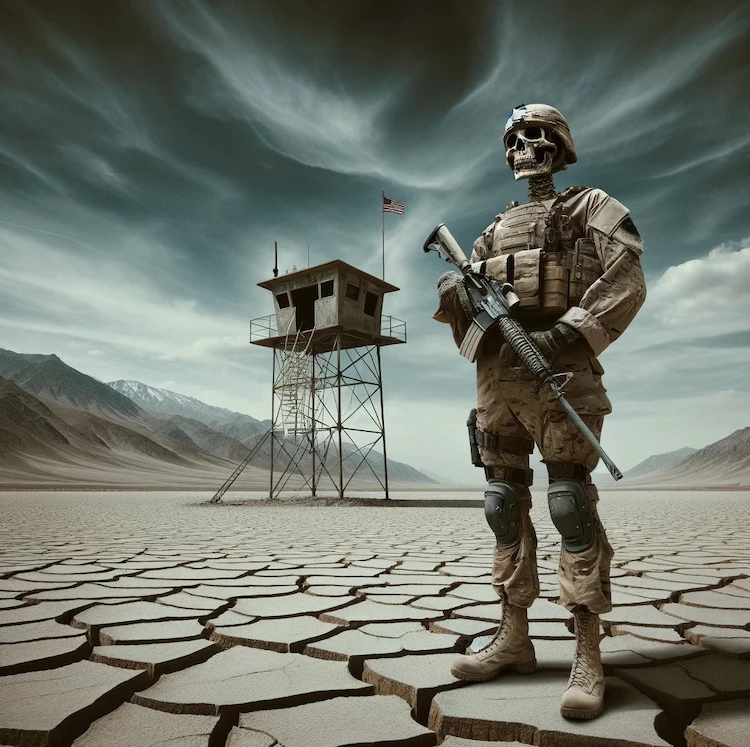
This vision, Valentin later realized, was emblematic of the ecocidal or self-destructive tendencies within Western civilization – deeply buried philosophical and psychological secrets of the civilization — an unconscious drive propelling the society towards its own demise, or an unconscious “philosophy of death” similar to the woke experience and cults now apparent to all. Although he never fully divulged this revelation, his assured nod to all of the passengers, implied that, everything will be alright in the new world.
A week later, upon landing Ontario from New York, Valentin disembarked in Ottawa, and immediately noticed a Canadian RCAF pilot beside a fighter statue up high, a jet adorned with national symbols, heritage and World War history. It was then that another vision struck him: a towering structure of stone, like a slightly angled skyscraper of ancient times, reminiscent of ancient “Tower of Babel”, but more square like a skyscraper with pyramid like qualities, slightly converting towards the top to a point, and comprised of smaller, neatly aligned stones that formed a high tower surpassing any palace or empire of Europe in height. Within this towering edifice was one upper chamber, clouded with shadow and night, but basked in sunlight which pierced the darkness to ocassionally provide Valentin a gaze into the two mysterious figures, which he noticed, through the opening at the balcony, walking and plotting, and smiling and pacing readying for the audience. In his vision, Valentin, still a child of 7, flew into this shadowy, sun-drenched room, where he encountered, but wisely kept his distance rom this tall charismatic white man, dressed in a sharp black suit, black tie, and white dress shirt, of about 45 years of age. The man’s smile was enigmatic yet reserved, and he bore a striking resemblance to the person in charge of Canada today.
Next to this man stood another figure, who reminded Valentin of a religious priest, like the priest of Christian world, and yet it was confusing asa to who this was, as it looked like Klaus Schwab, but with the pope’s white clothing — whether or not this was a priest, it was clear that this man in a black suit, was not a politician, but did in fact rule an empire. Below, far in the distance, an expanse of millions of people in a grand market, cheering and waiting for his arrival, millions of citizens gathered, ready to pay attention to every word, cheering in anticipation as this leader prepared to address them, when he would decide to not pace from one dark corner to another in this chamber, but actually come to meet them and give them his time. Despite the intensity of the sun, which seemed to scorch his skin, to the point where he was no longer a white man, but easily confused for a Spanish man; the man’s presence was commanding, yet he spoke only on rare occasions when the world was attentive, his words rarely providing solace or guidance, only bright white teeth, and dark black features in complexion, words only spoken when big events were to occur.
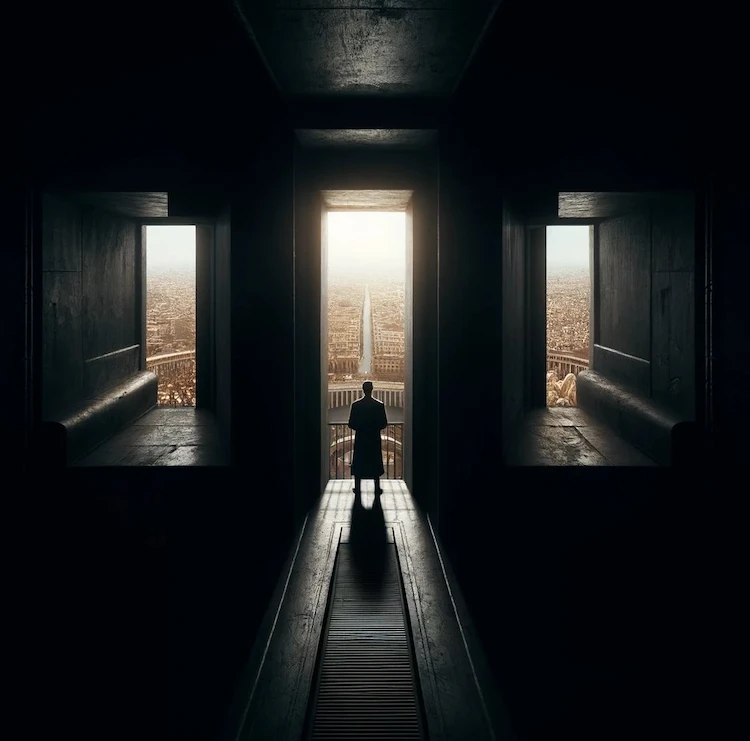
This vision transformed the setting: the tower was not located in Rome but in Canada, Ottawa, symbolizing a nation like an empire under the sun, this man would oversee a nation in decline. The end of an empire. Despite Valentin’s young age of 7, and the urgency of his insights, Valentin could only nod and smile to the optimistic RCAF pilot, recognizing the past bravery of Canadian war heroes without revealing the looming shadows of the future for the kids of Canada.
A recent vision and experience in 2019/2020, led Valentin to warn the entire Conservative Party. He called on all Canadians, especially those raised and born in the country, to put aside the pain of 20 years of being harmed, and to remember the politicians who have tirelessly advocated for their well-being — like Danielle Smith, who fought with the intensity of shifting galaxies to align the skies for farmers’ prosperity. In times when political maneuvers from this man and his people, that seem to incite division under the guise of combating hatred of the Canadian born and the Candian raised, and even of the older immigrants who are now Canadian, Valentin emphasized the importance of remembering those really loyal politicians of Canada, as exist on the Conservative Party, who truly fought for their constituents, and who do so minute by minute, moreso than Valentin of SGT ever could. Such collective memory, of Canada’s conservative heroes, Valentin believed, would be crucial in navigating and overcoming the challenges of the great rise to arms of Canada’s kids. Remember Canada, it is not only the vision of the man in the suit that matters, it is also the vision of the kids who watch the man, who have the complete vision.”
Related books and resources:
To see our Donate Page, click https://skillsgaptrainer.com/donate
